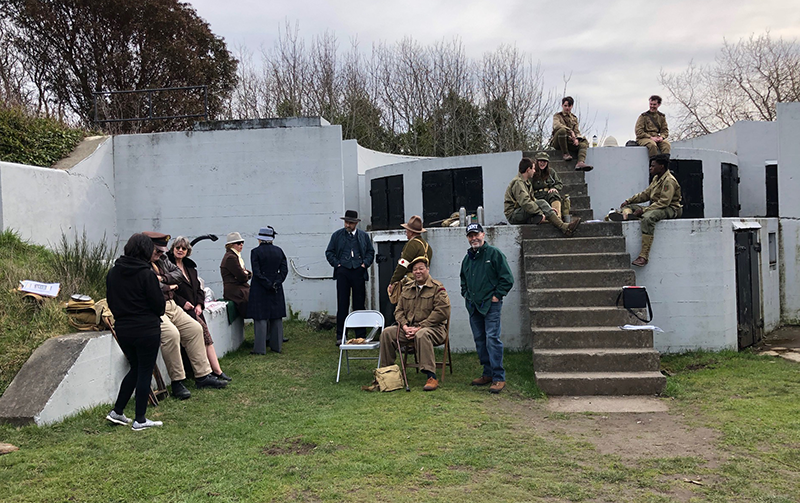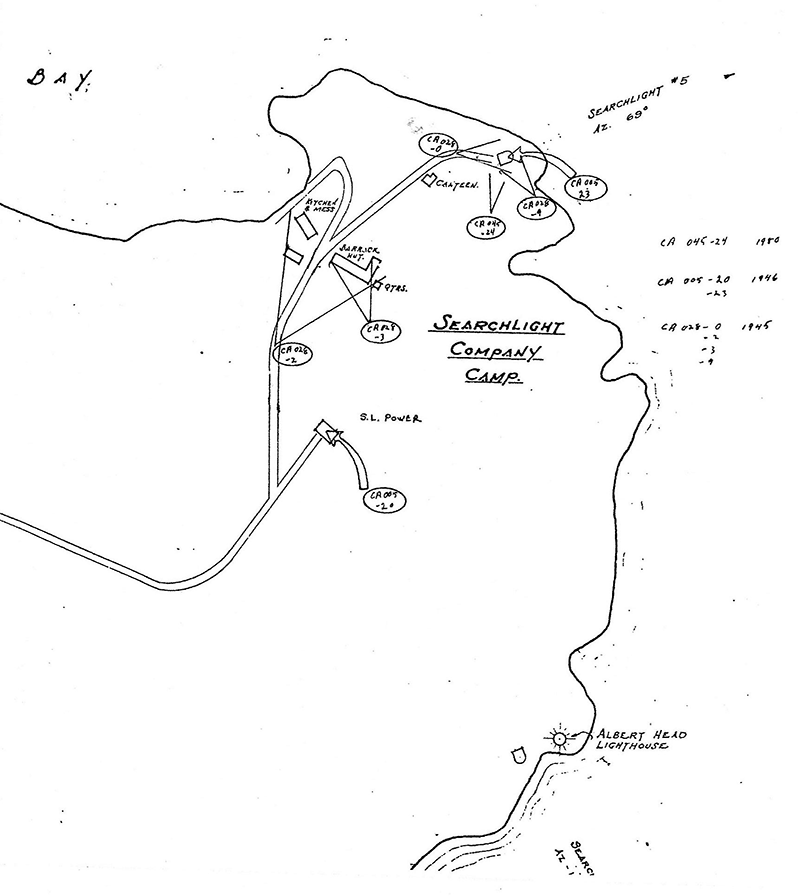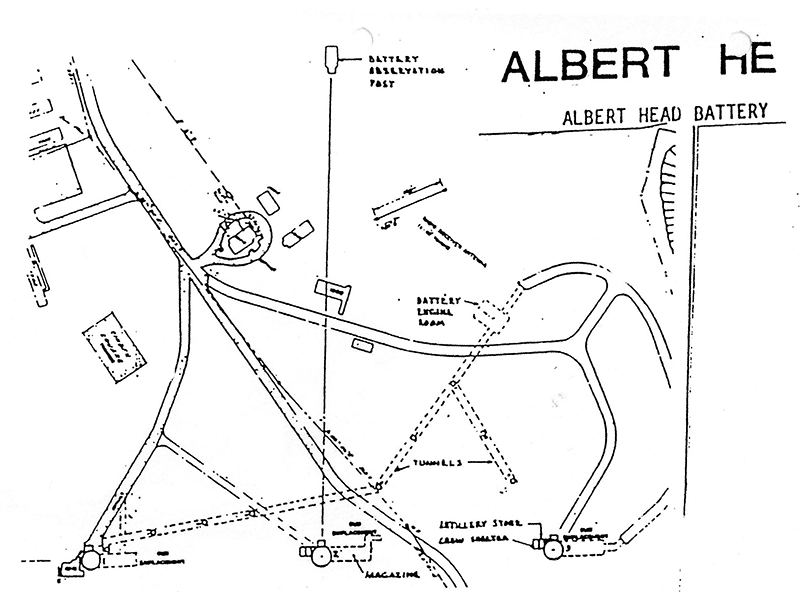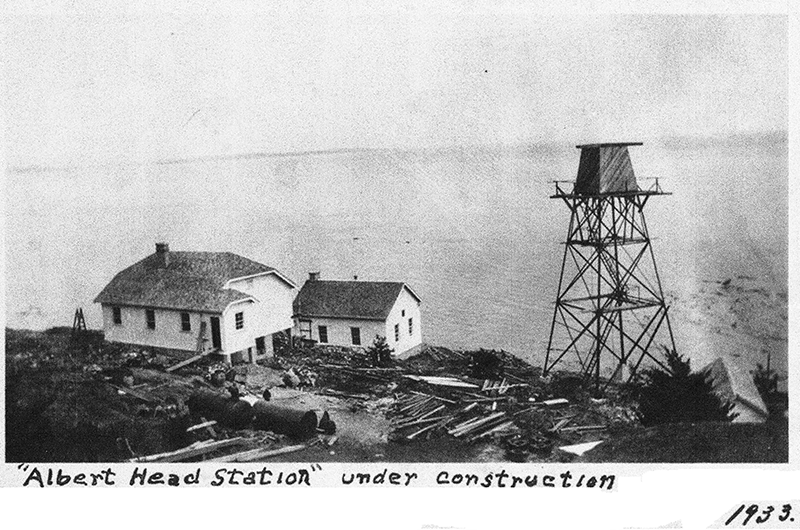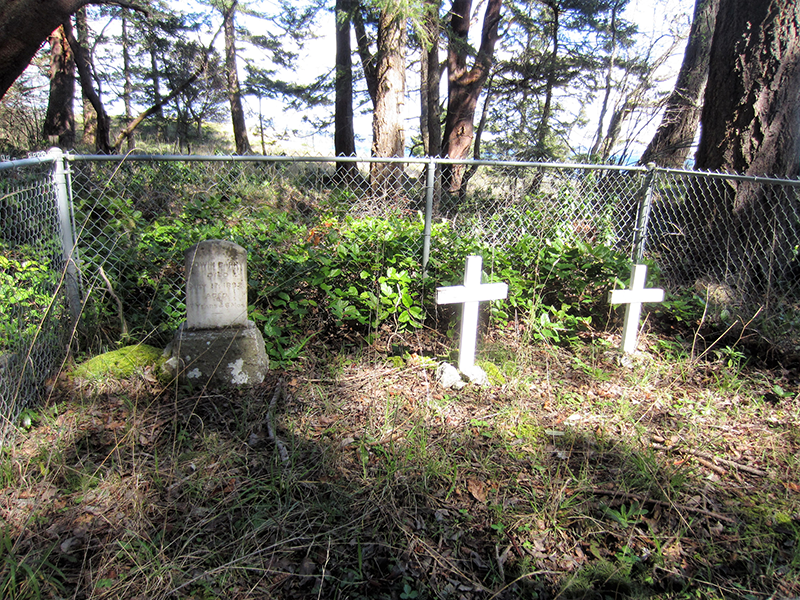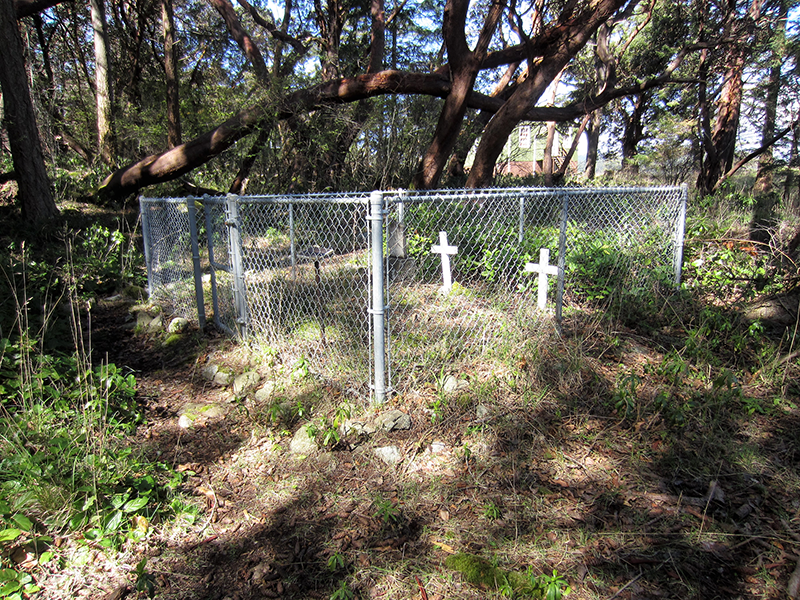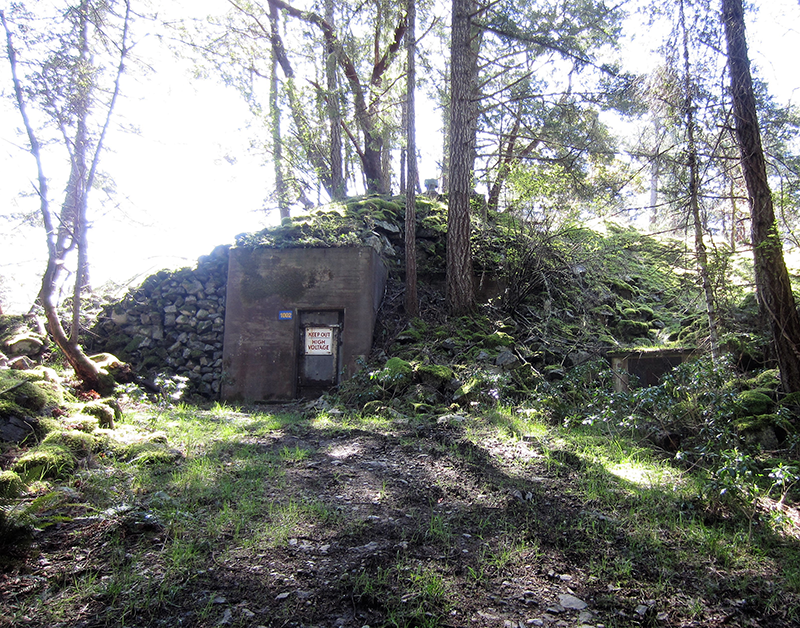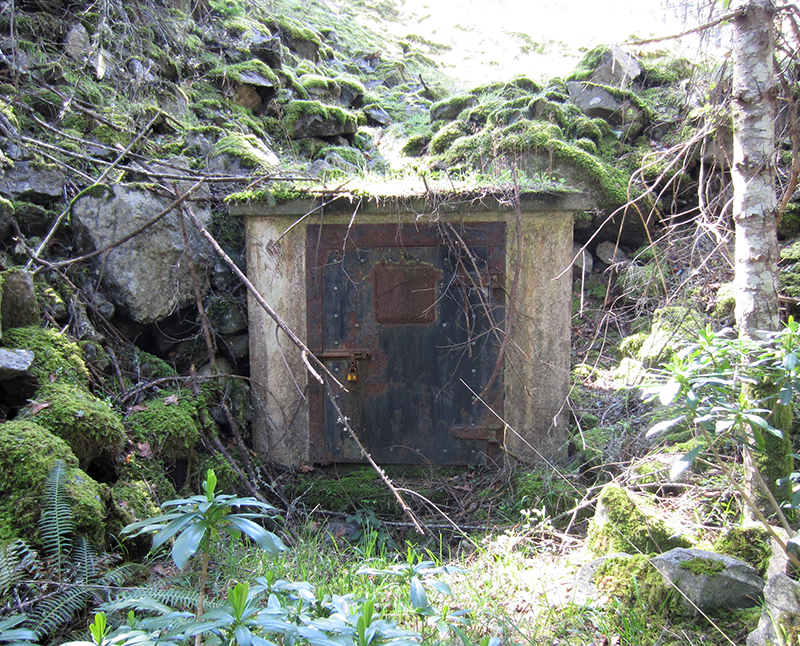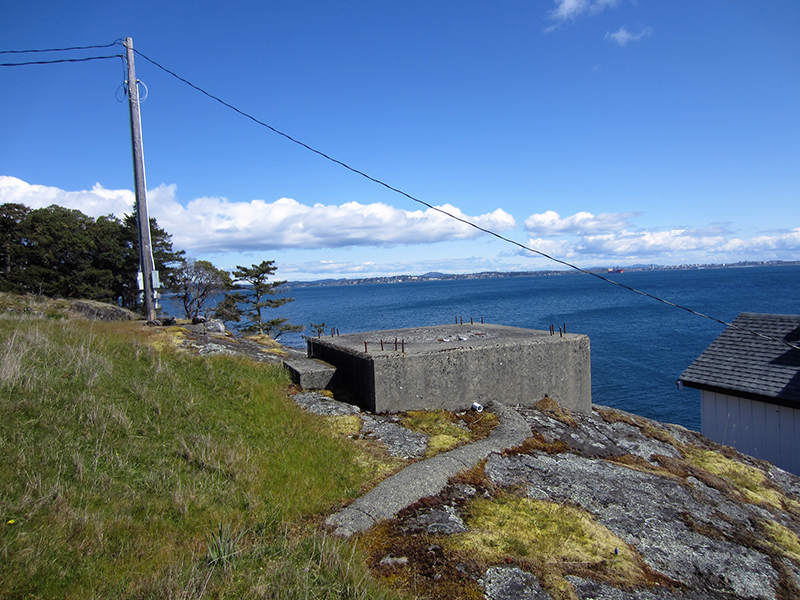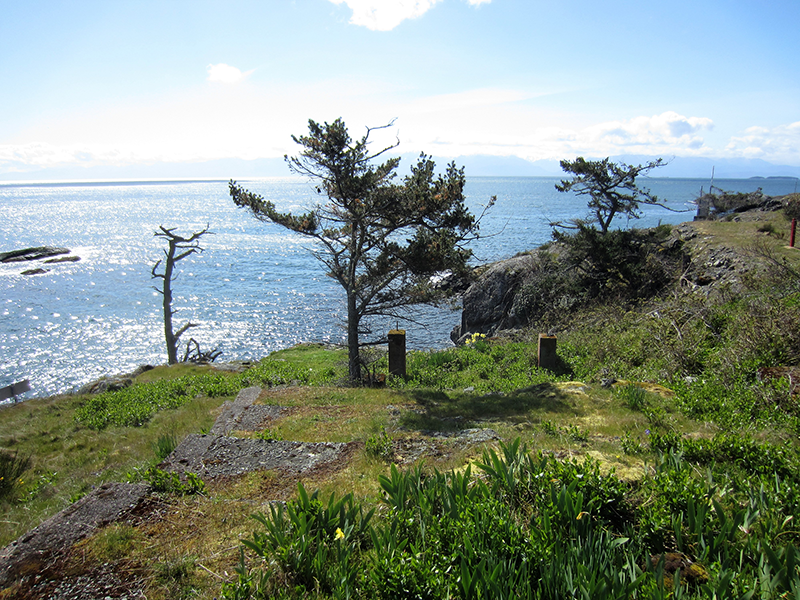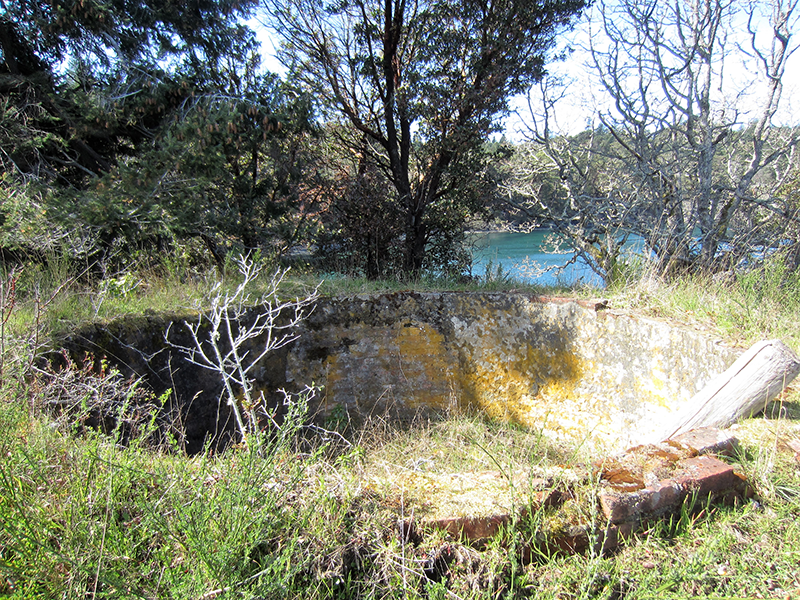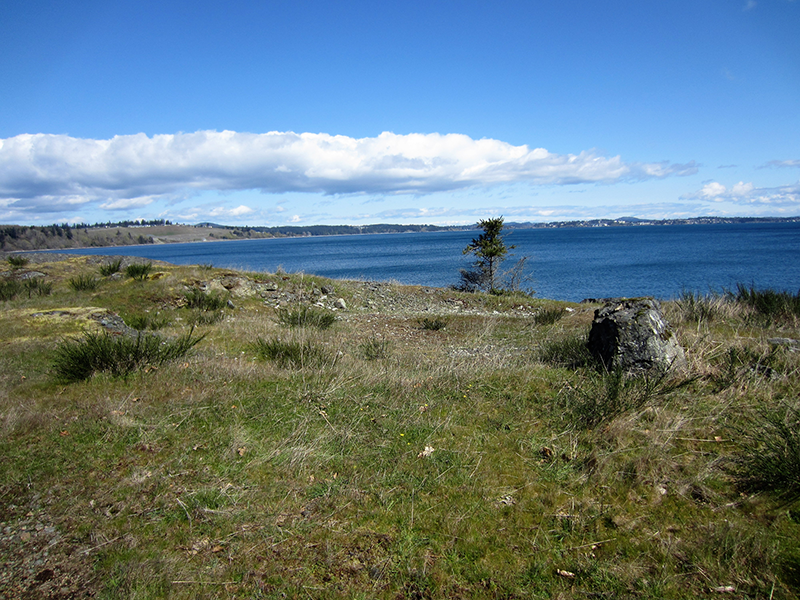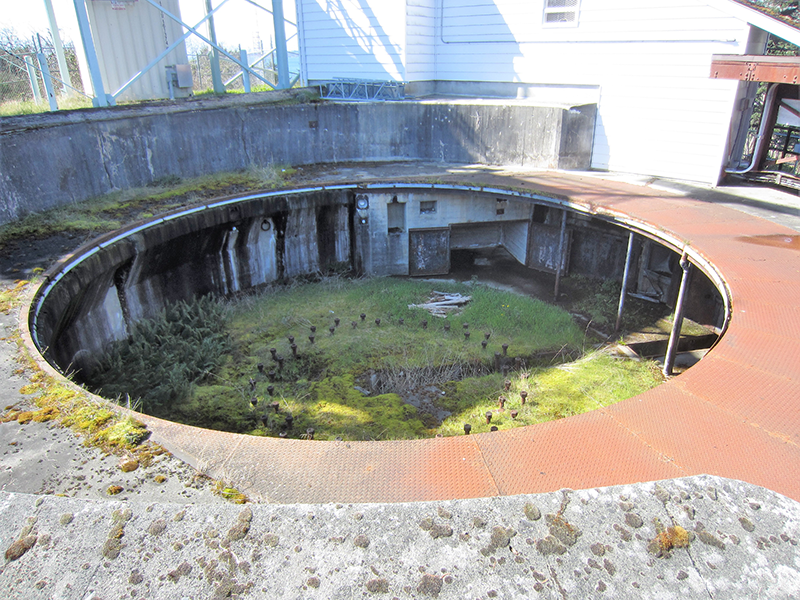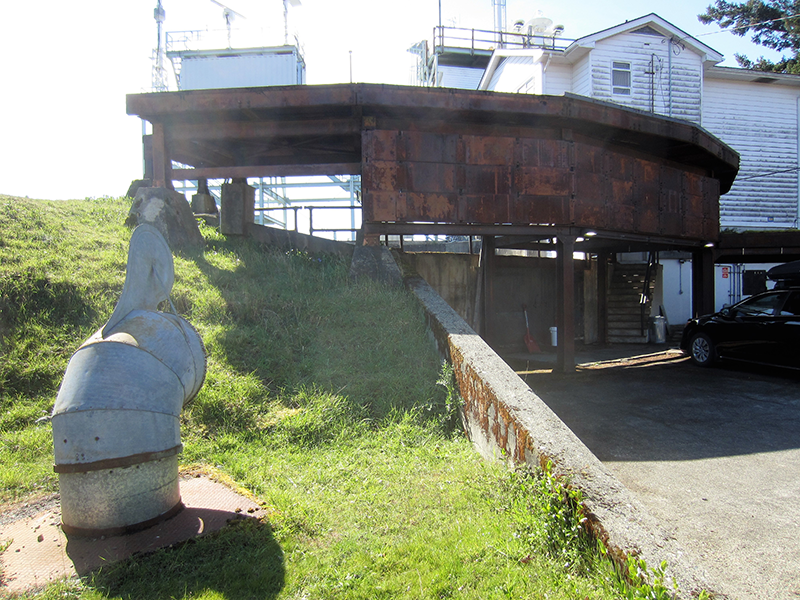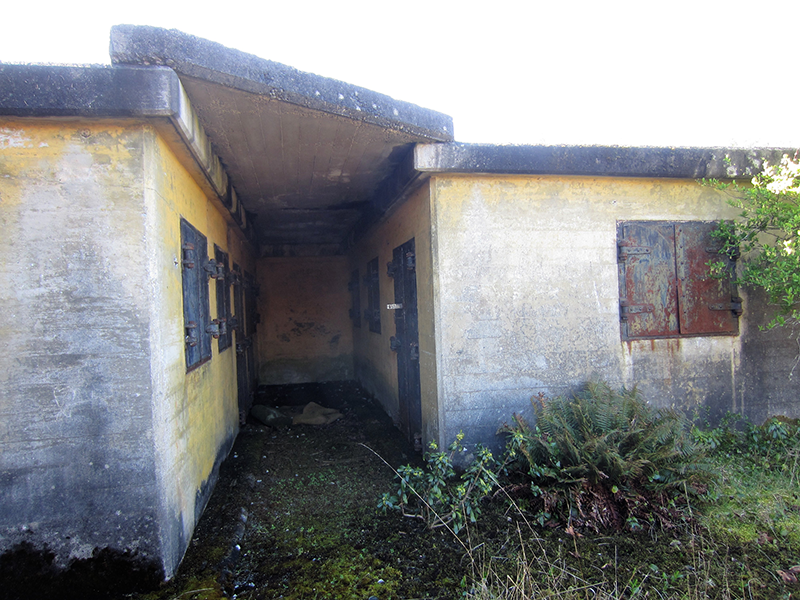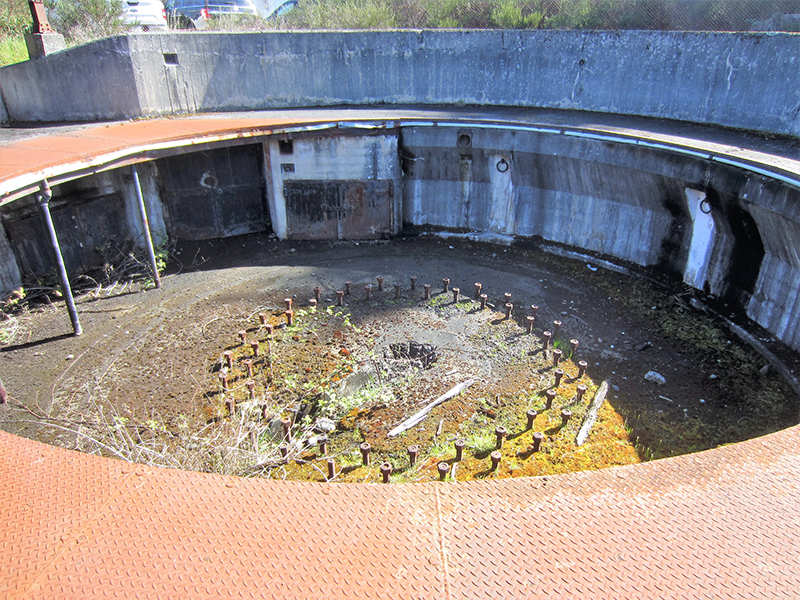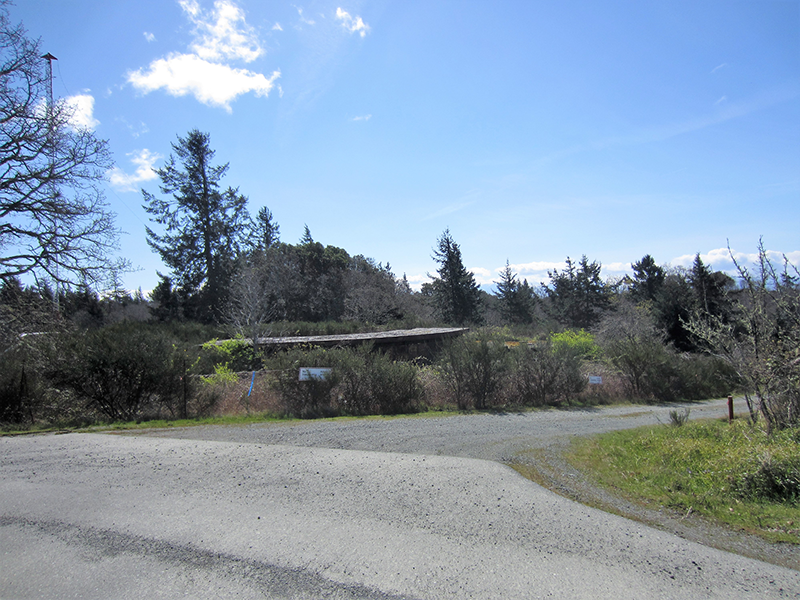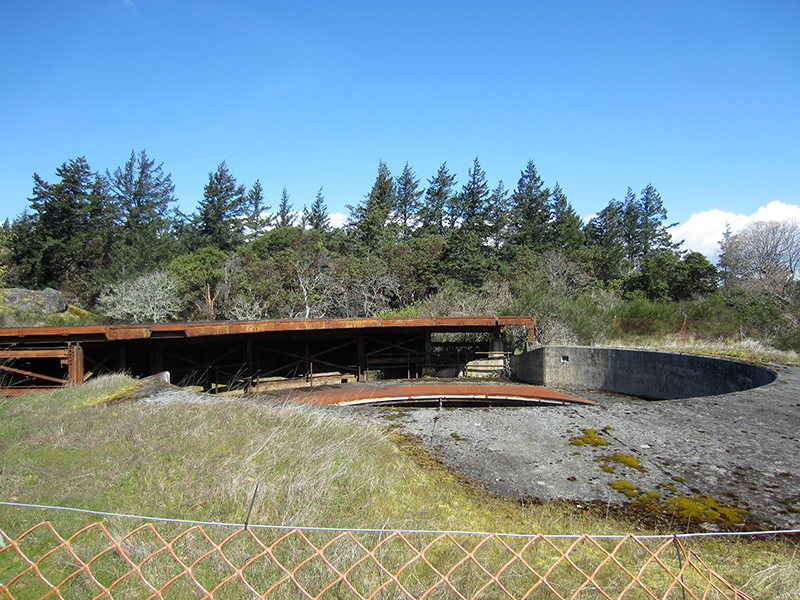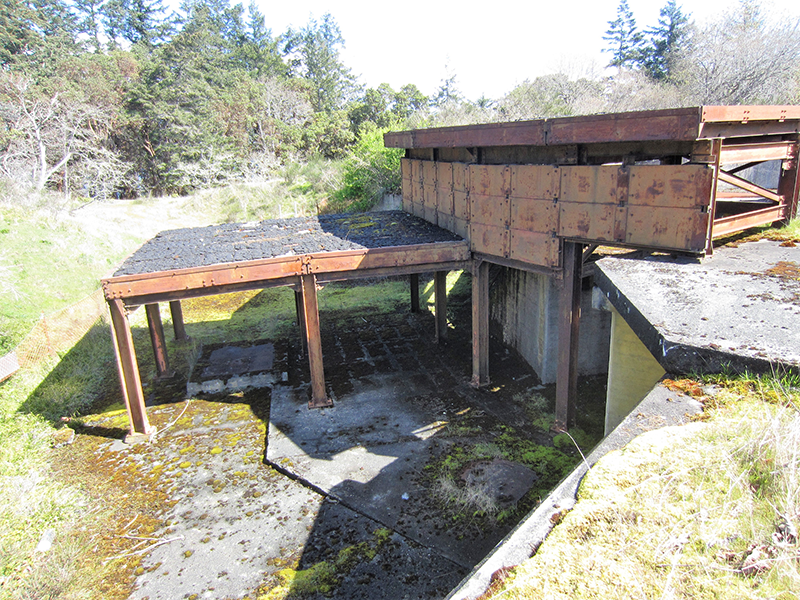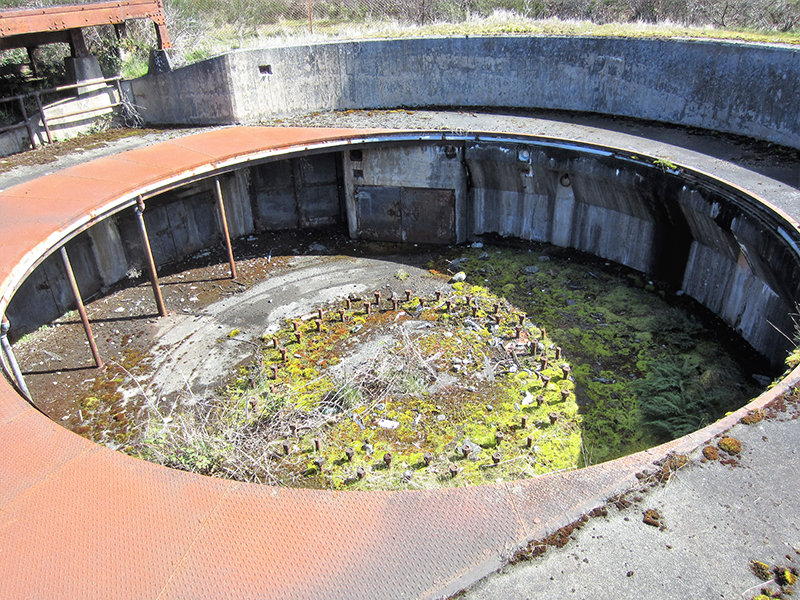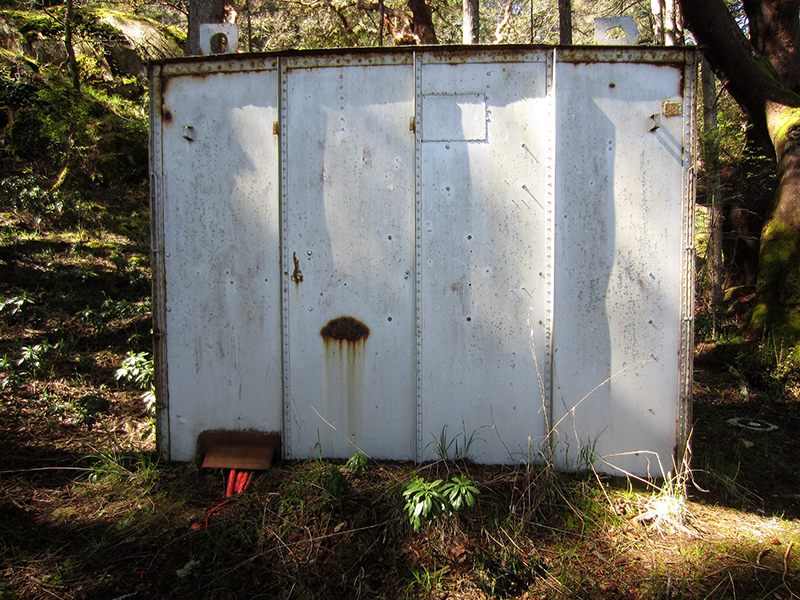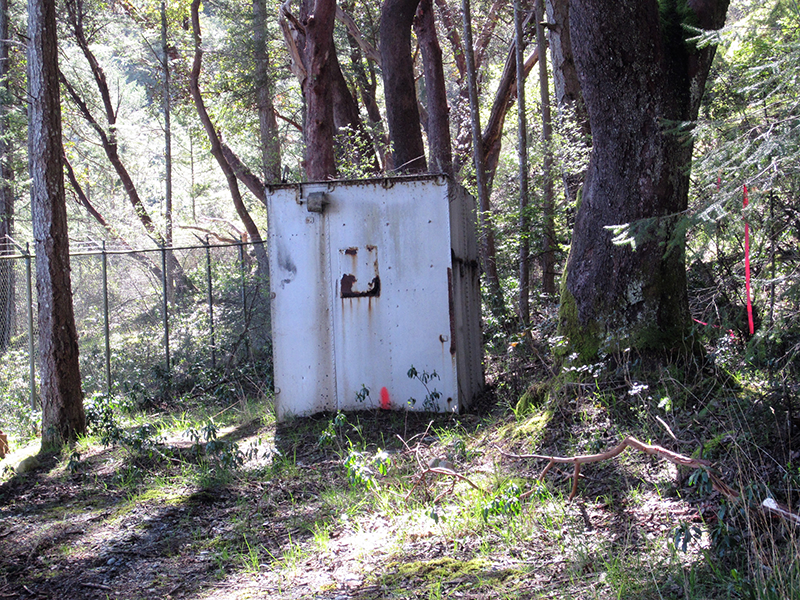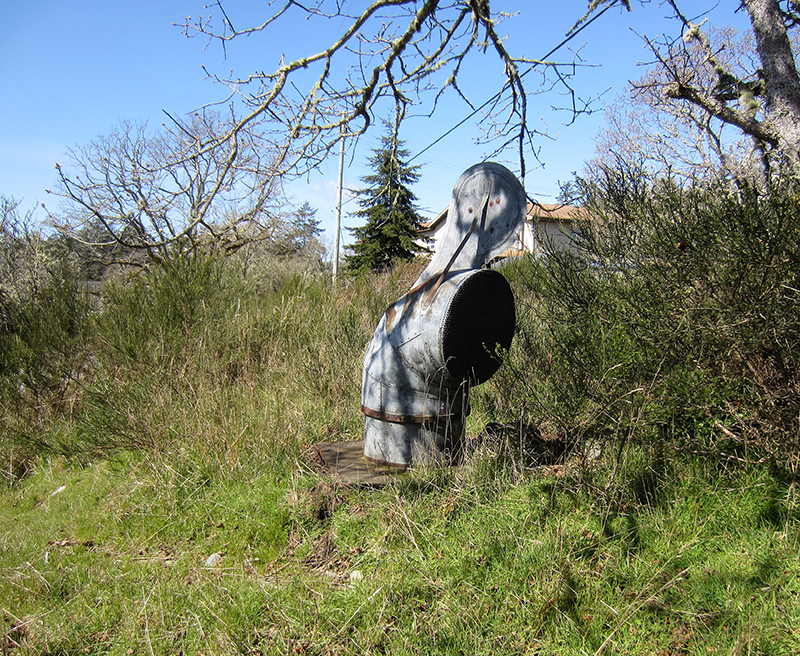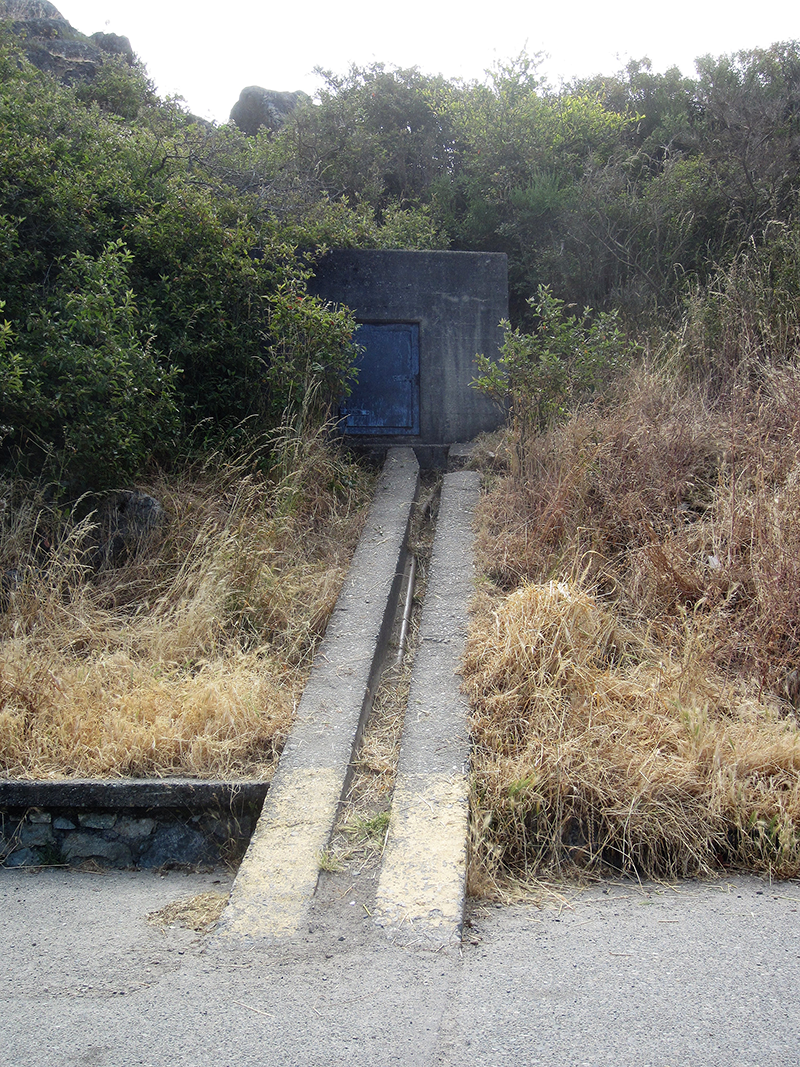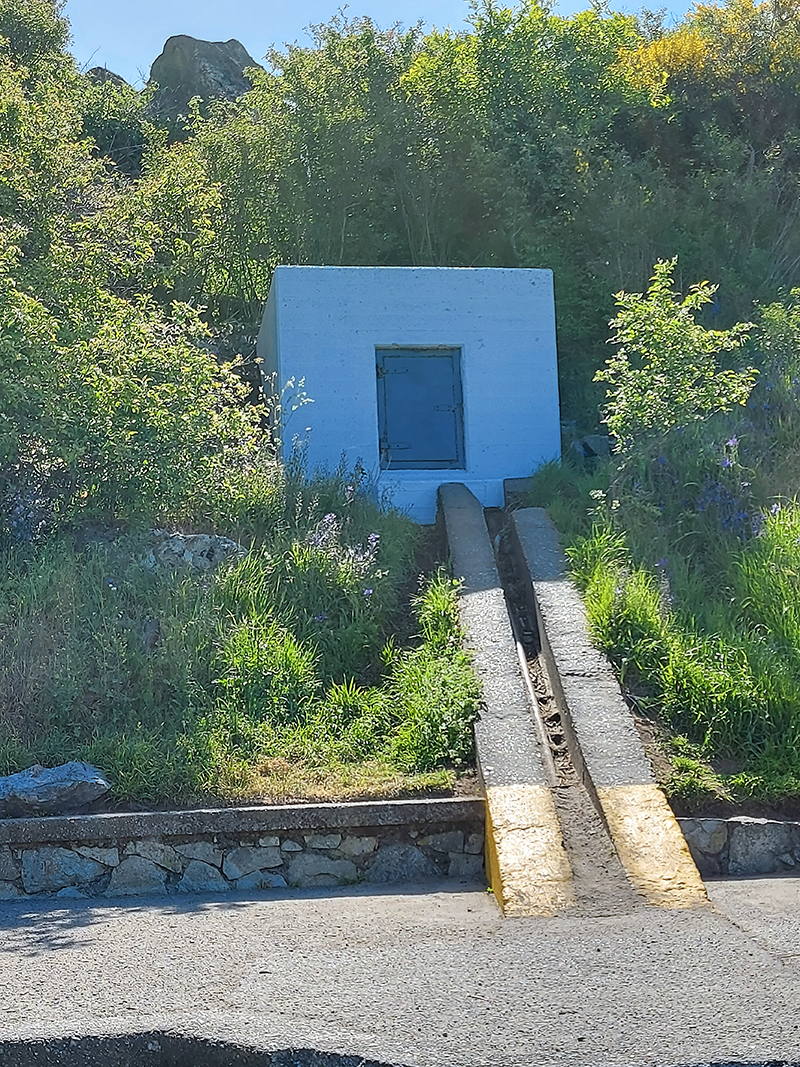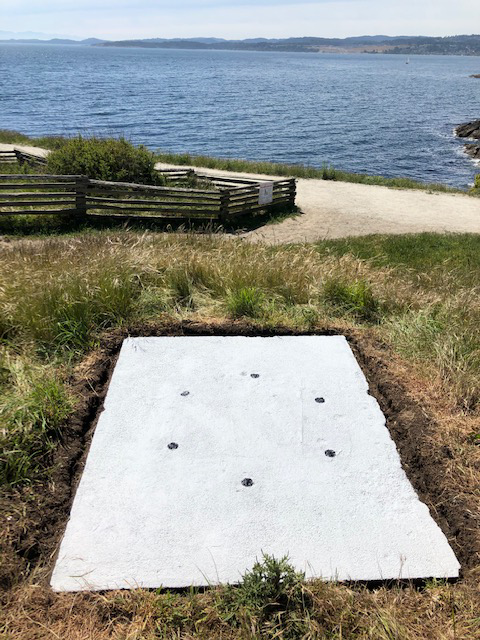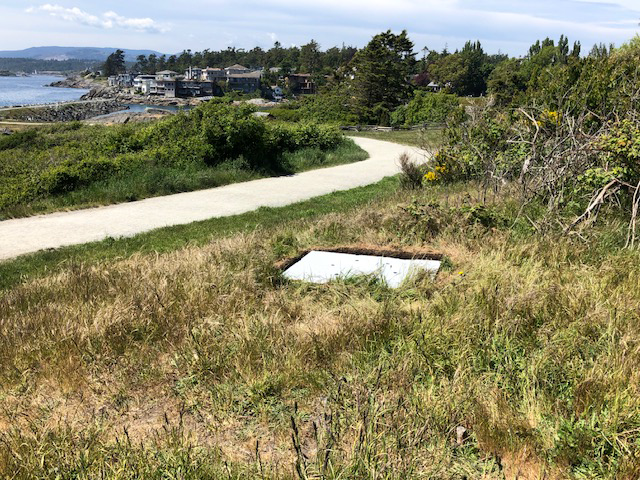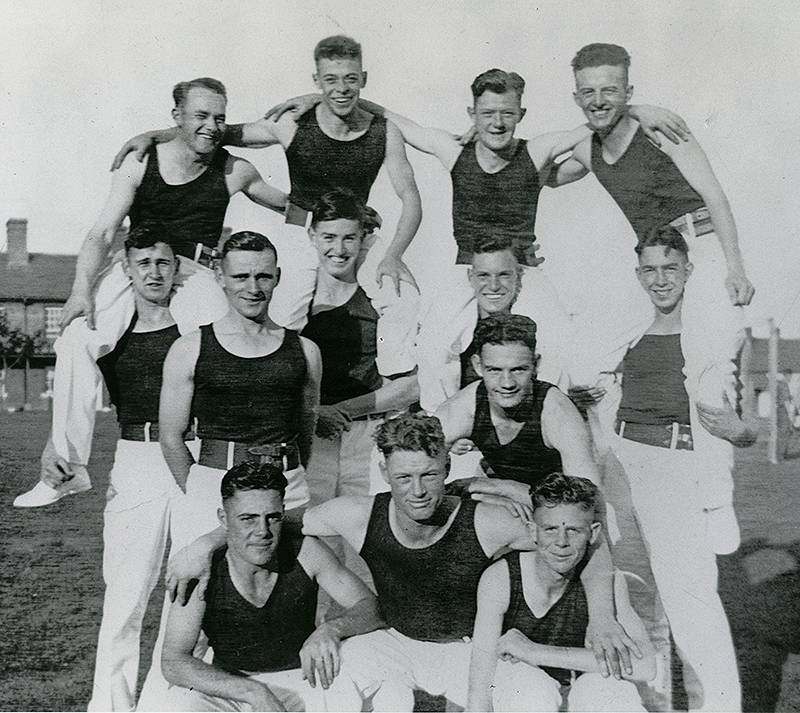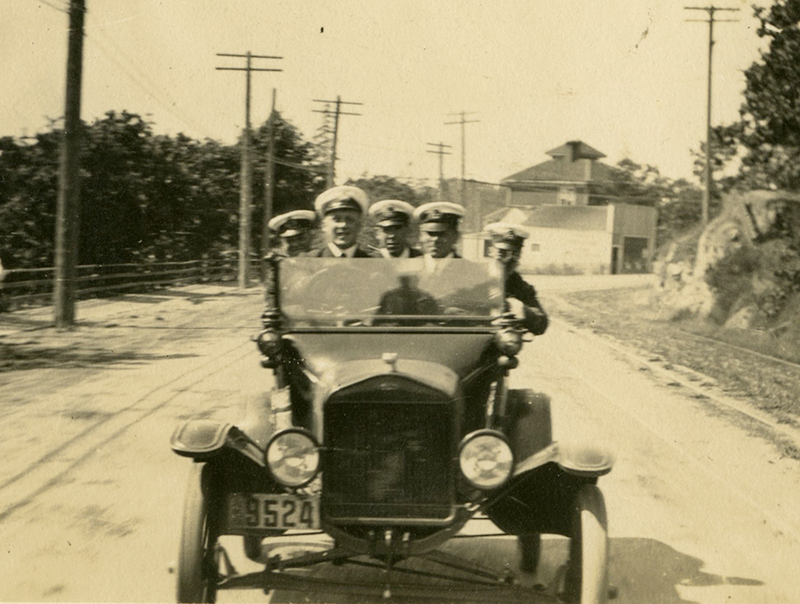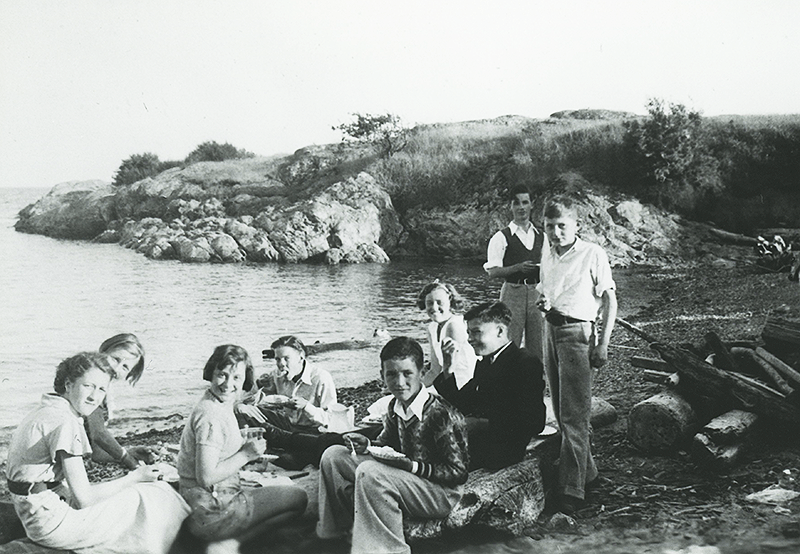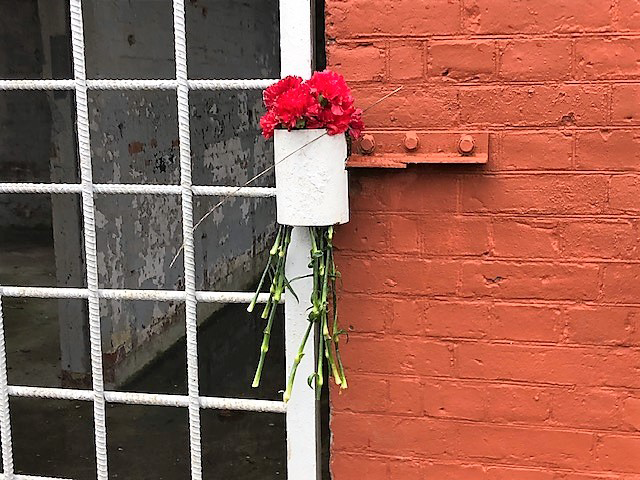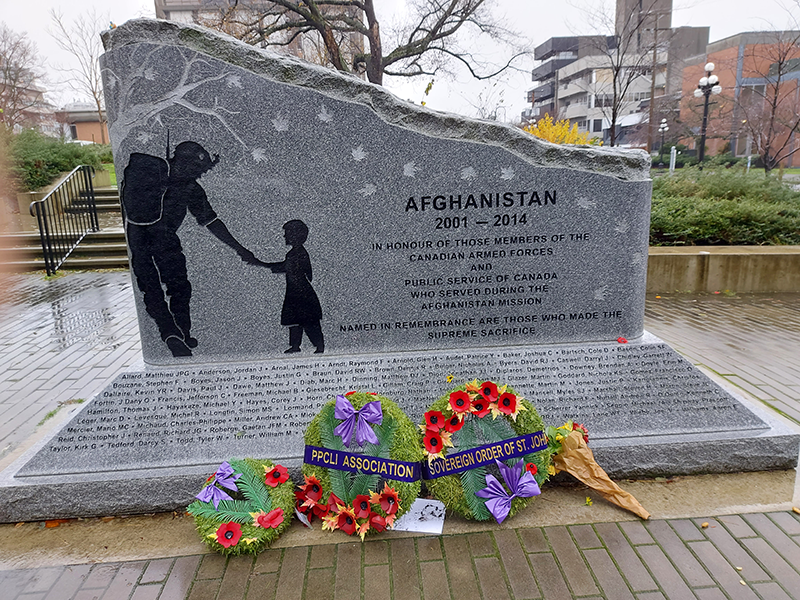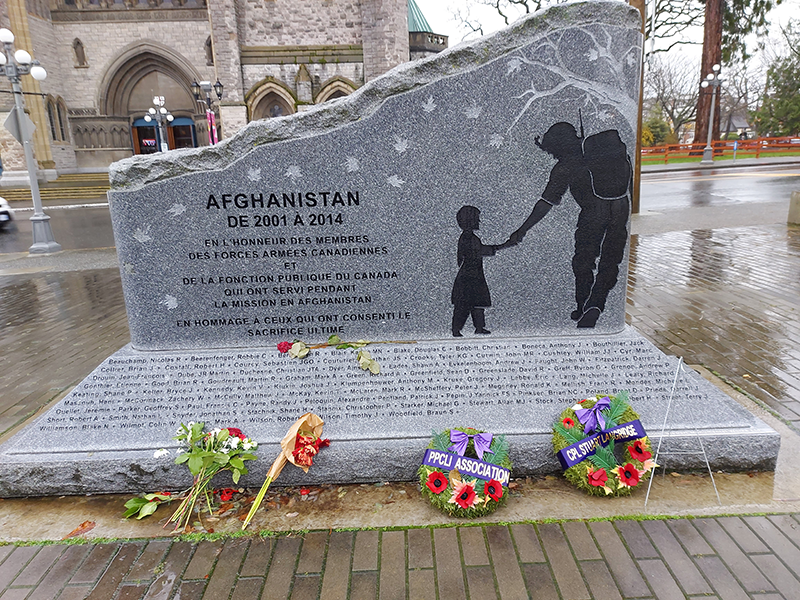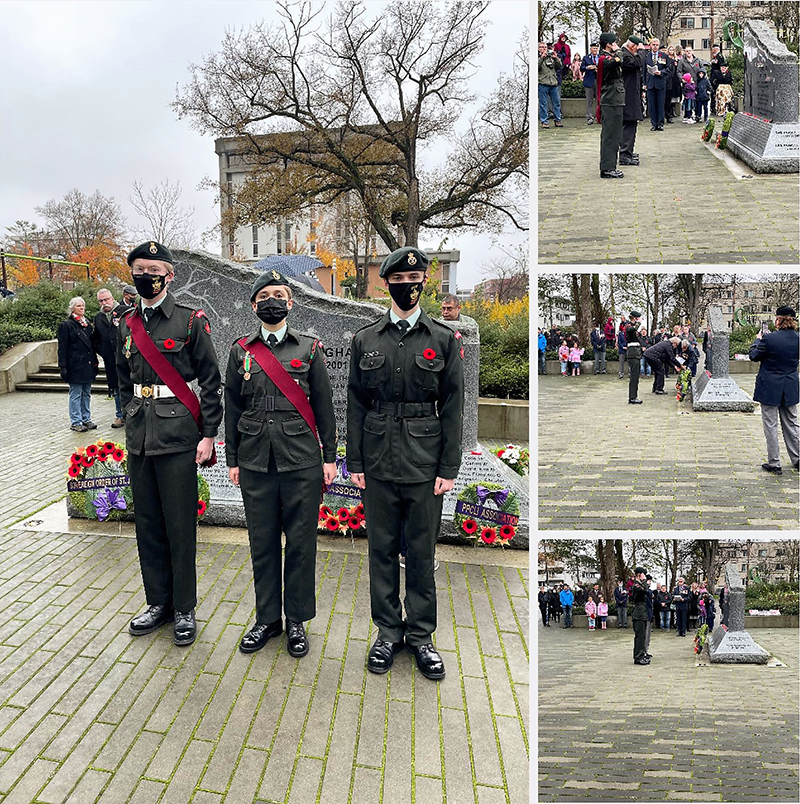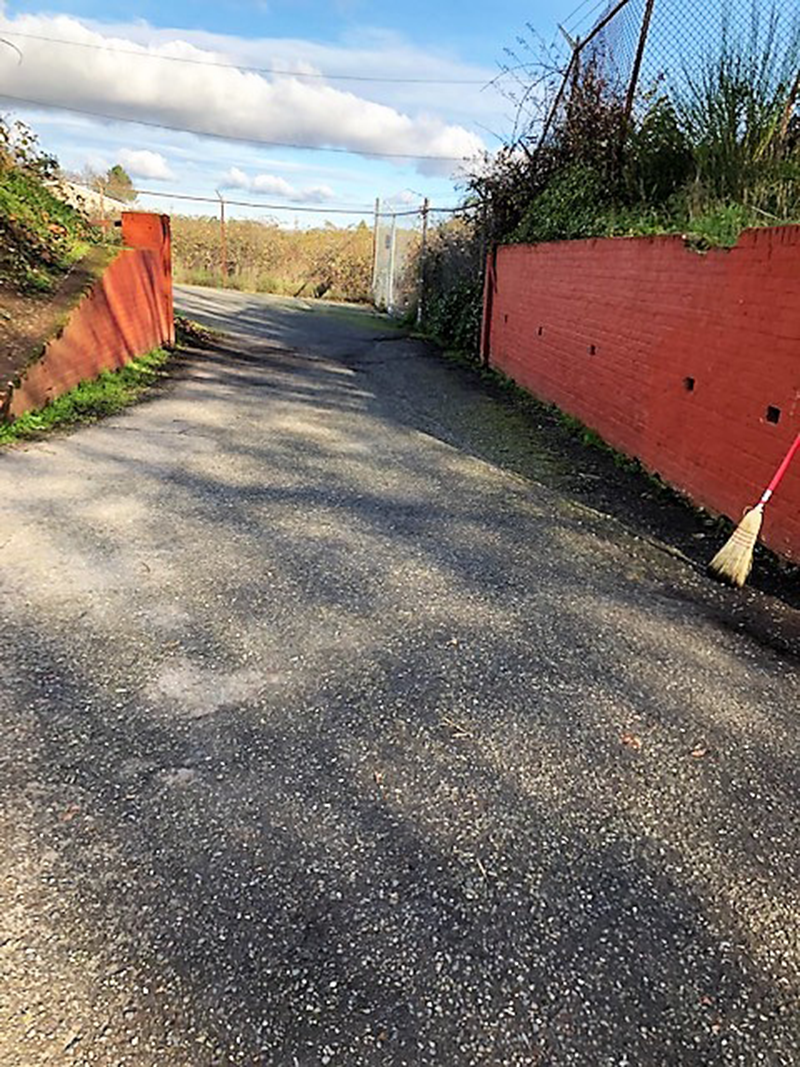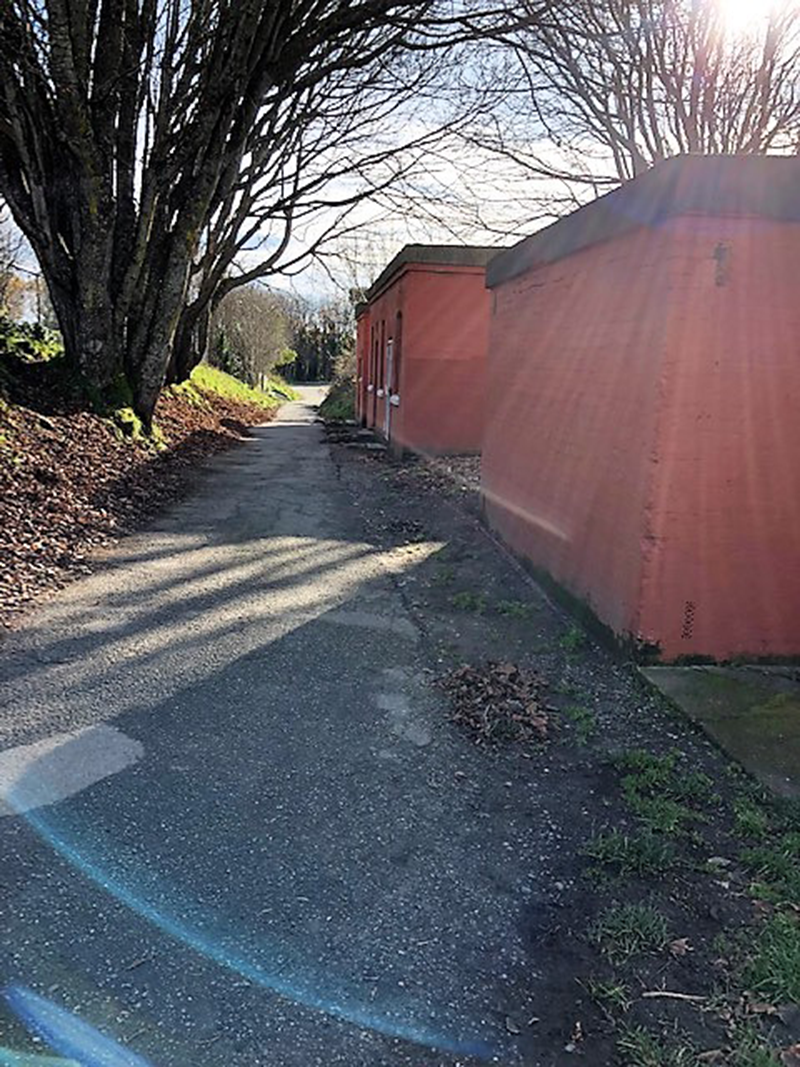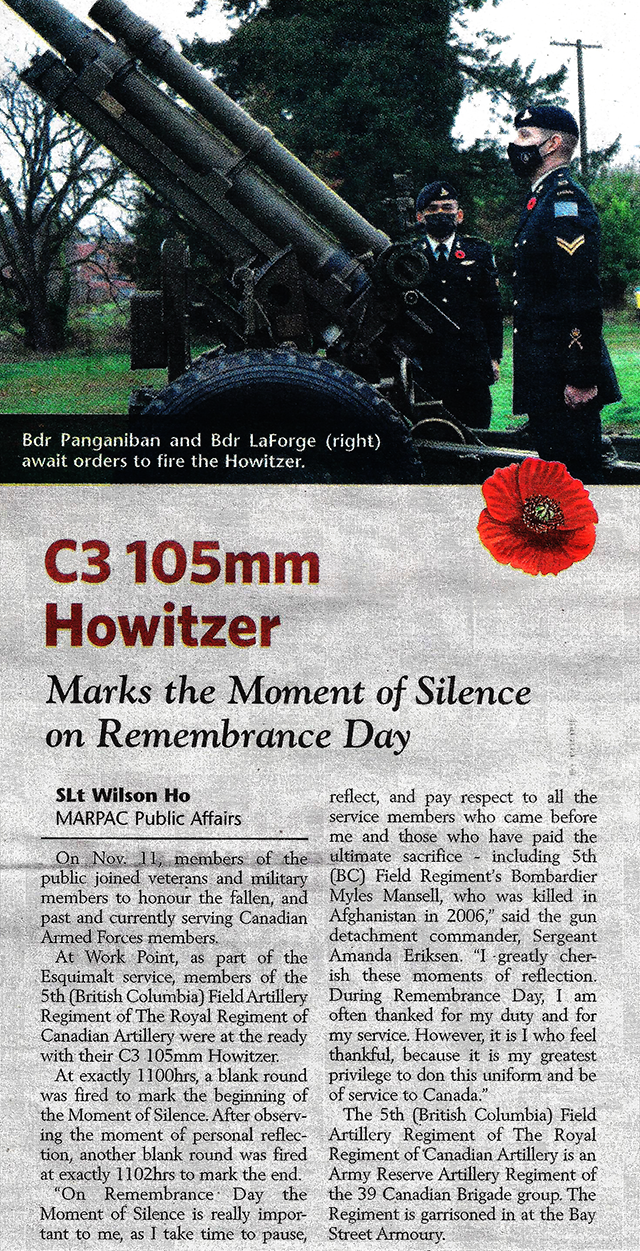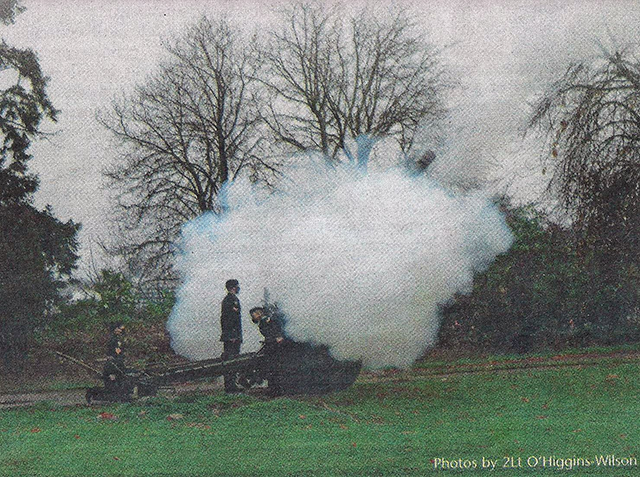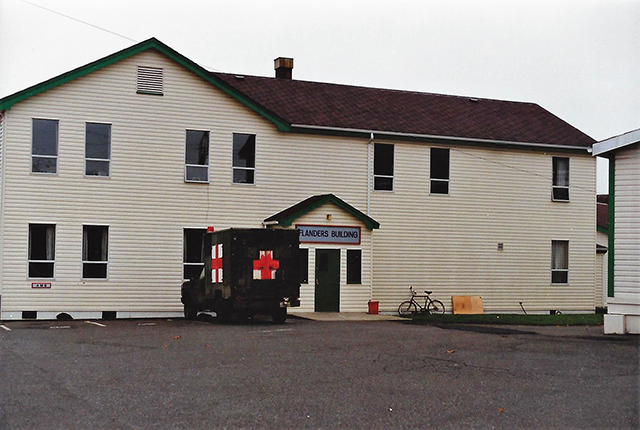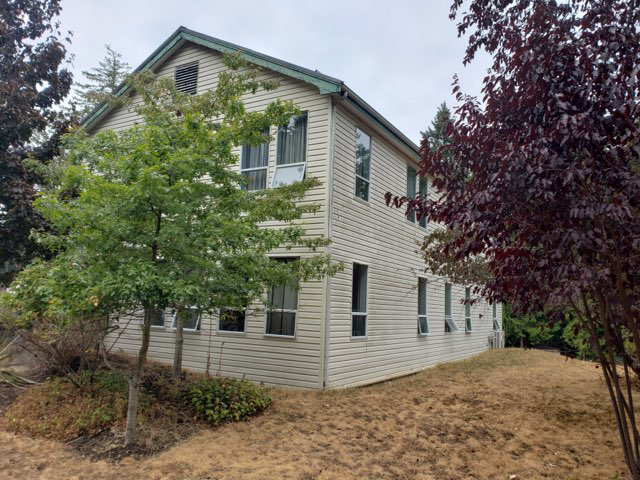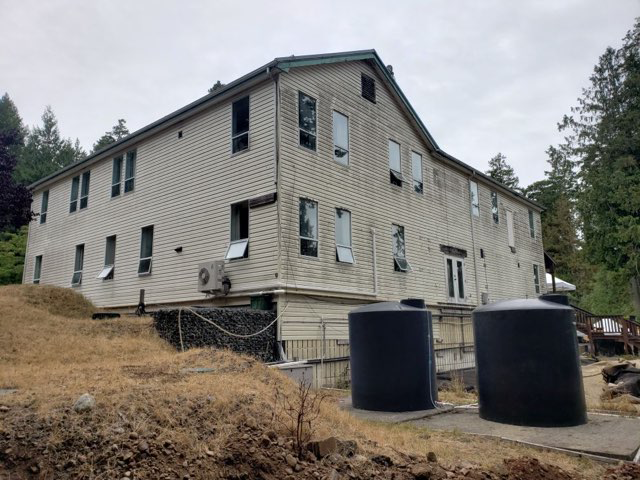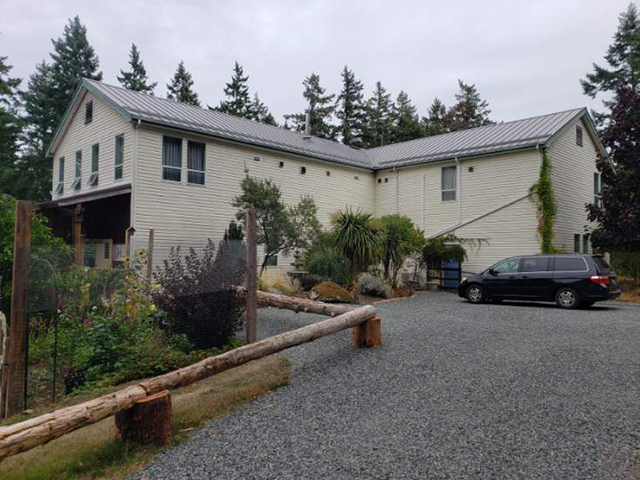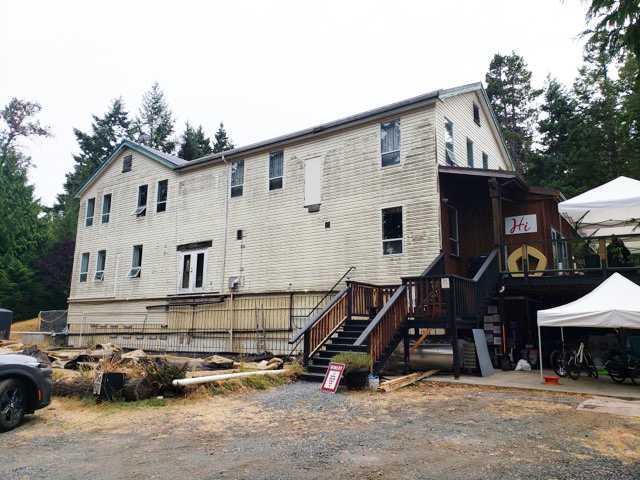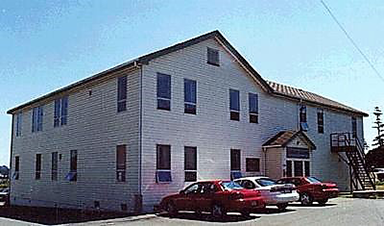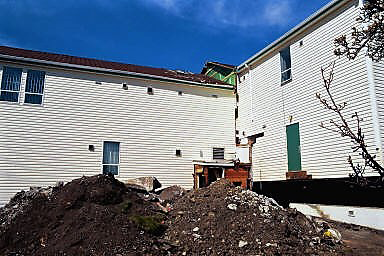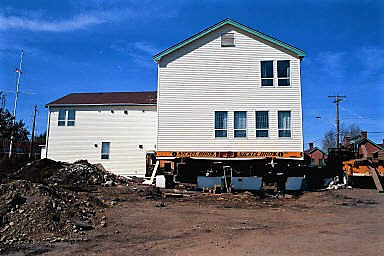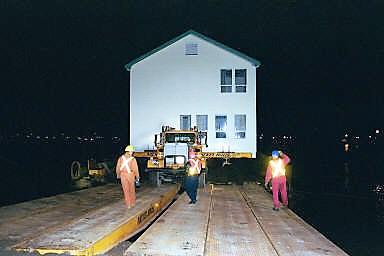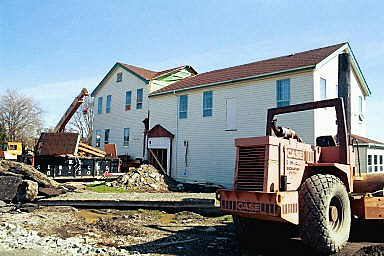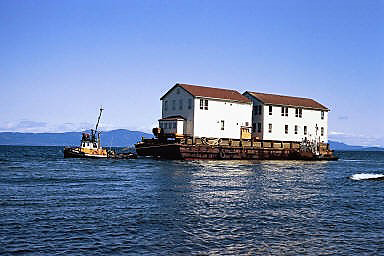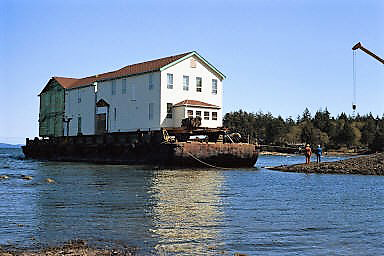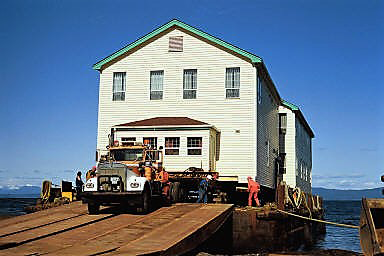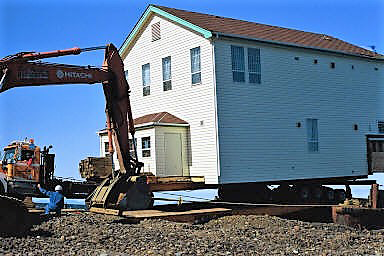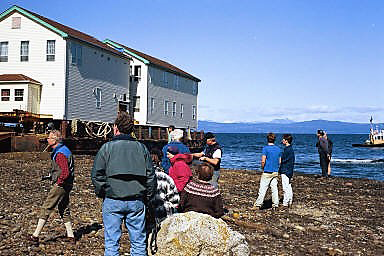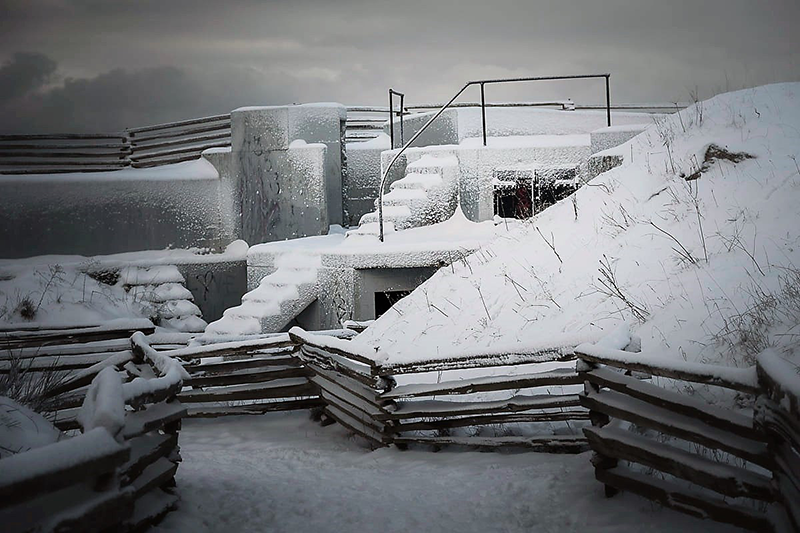 |
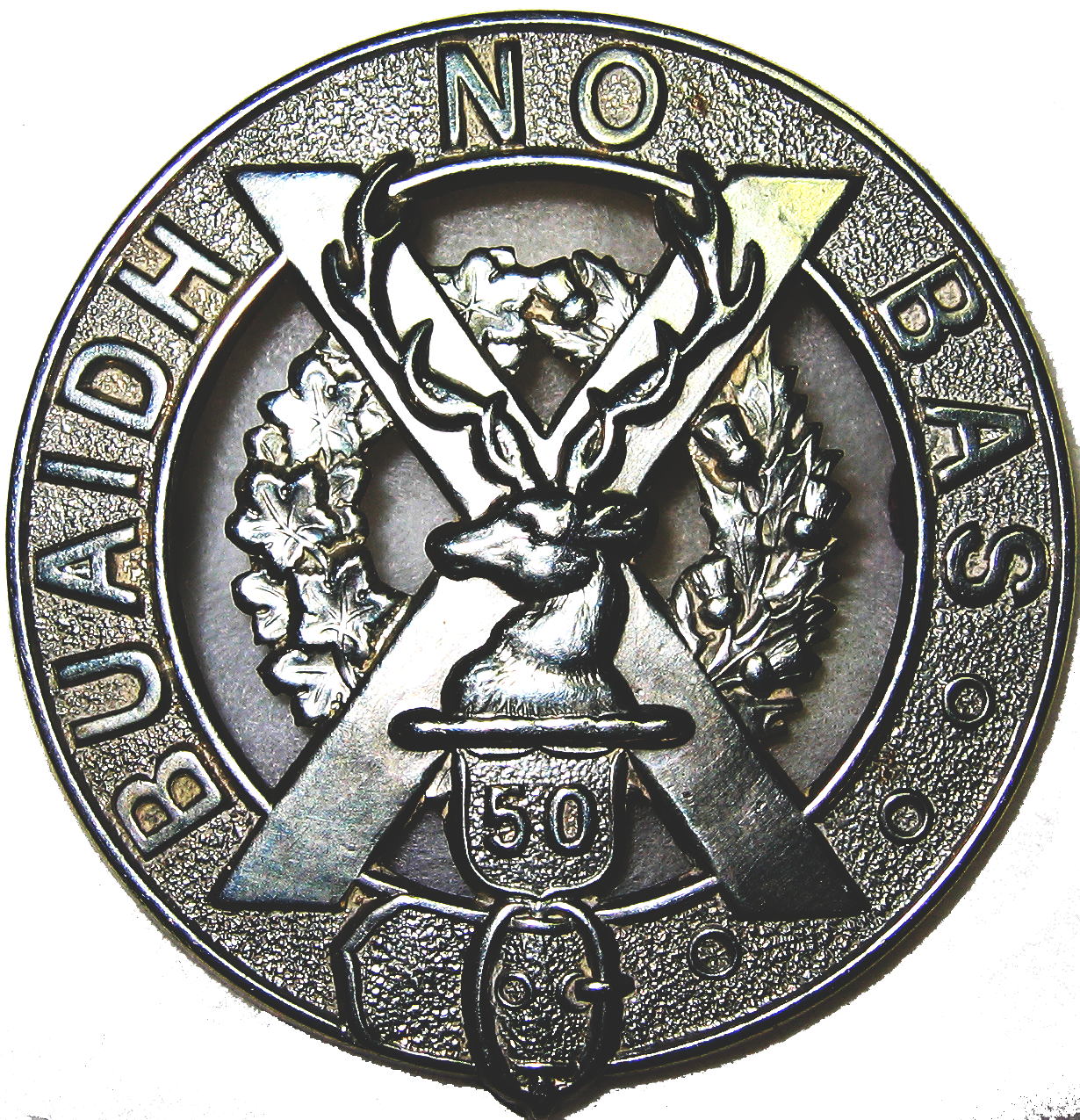 OPCMHVisitor No.: |
HISTORY OF WORK POINT BARRACKSby Jack BatesPART 10 — 1995 to 20222021FORT MACAULAY Looking back on 2020 at Fort Macaulay, its presentation continues to be improved, with the efforts of the Fort Macaulay Field Force and the Esquimalt Parks Department along with the many visitors who respect the park area. One off-side note though are the disrespectful ones who deface and tag the structures, some with very distasteful content which forces the Parks staff and volunteers to clean up and repaint over the “mess.” This includes garbage which is left behind, content of which is dangerous to the visiting public, consequently involving the Police. OPCMH A colleague of mine, Doug Knight in Ottawa, has authored a book titled “The 9.2 inch Coast Defence Gun in Canadian Service.” There is mention and photos of the Signal Hill Battery in Esquimalt and the Albert Head Battery in Metchosin. Thank you Doug. Click here to view Doug's book as a PDF OPCMH Today, retired PPCLI Major Murray Edwards, residing at the Broadmead Lodge, celebrated his 101st birthday in fine style. He received over six dozen cards and birthday wishes from friends and officials alike. A wonderful day for him, we all wish him the continued very best. The LOOKOUT of January 25, 2021 covered his birthday, thank you to staff writer Peter Mallet and managing editor Melissa Atkinson.
MAJOR (Ret’d) MURRAY CAMPBELL EDWARDS CD Murray was born in Cambridge, England on January 16, 1920. His father, William Edwards, was a member of the Canadian Expeditionary Force (CEF) during World War 1 stationed in England with the Canadian Forestry Corps. He had a severe sight problem in his left eye from a childhood incident but not to be held back, he managed to gain acceptance into the Army by sheer determination. He attained the rank of Sergeant in England and later married there in December 1918. Like his father before him in August 1917, Murray, living in New Jersey in June of 1942 and classed as a “friendly alien,” travelled from New York to Toronto, stayed at the Y.M.C.A. on College Street and “joined up” in the Canadian Army. He found himself a Rifleman in the 2nd Battalion of the Queen’s Own Rifles of Canada being paid at a rate of $1.10 a day. During the five months of training at Niagara on the Lake, there was one single incident which dictated how Murray would spend the rest of the war. He had volunteered to participate in the next day session of “how to darn socks.” He so impressed an officer from Toronto and was promoted Corporal. It was at this point in his career that Murray determined the Army decided he was more valuable as a trainer. Soldiers had to buy their stripes at Eaton’s in those days, Red and Black stripes were a $1.00 a pair while khaki stripes were only $.15 a pair. Congratulated by the Camp RSM and advised to keep his nose clean, work hard and “you’ll make Sergeant with more responsibility and privileges.” This provided Murray with both a challenge and incentive, much unlike a later MND Paul Hellyer who said, “A member of the armed forces was no different from a postal worker – both are civil servants.” Something he recalled with displeasure. In December 1942, the 2nd Battalion of the Queen’s Own Rifles sailed for England with its destination Aldershot, home always for Britain’s armies. They arrived at “Salamanca,” built during the Crimean War; the first floor was for horses, the second and third floors for the men. Murray was then selected because of his success as a trainer, to be ACK / I for the Experimental Officer’s Refresher School at Crookham. He soon learned that the term ACK / I was assistant weapons instructor for the five week assessment course that Canadian Officers attended on arrival in England. Eventually in May 1943, he was promoted to A/ Sgt w.o.p. (without pay) but gained access to the Sergeant’s Mess “sans dues.” In late August 1942, he was then selected to attend the ten day Officer’s Selection Programme at Ash. Issued # 87 for identification and armed with math books and a copy of Stephen Leacock’s “History of the British Empire,” one question being memorable: The difference between British and French Colonial systems.... Murray replied, “The British try to make the African a better African, the French try to make him a better Frenchman.” He was accepted for Officer Candidate Training and returned to New York on the Queen Mary in November. From the familiar Grand Central Station the officer candidates trained to Toronto, Stanley Barracks to be exact, where Murray was granted seven days leave, and of course went back where he started, home to New Jersey. After his leave, he reported to Brockville, Ontario for officer’s training and graduated in February 1944 as a Lieutenant. He was invited to join the Officer Candidates Training Unit and was sent west in April 1944, where he joined the staff of the Canadian Battle School in Vernon British Columbia in training officers for combat. He was involved in upgrading the course to suit increased standards and then was appointed Intelligence Officer for the “Pacific Brigade,” as he called it, until the “Atom Bomb.” After the war, Murray found himself on summer call outs with the “Reserves” instructing Tank / cum Infantry tactics for Militia officers at Camp Petawawa during the years 1946 to 1950. The joy of post war camps was that there were no restrictions to training resources, including weapons et al for real effect. In the summer of 1950 the Korean Special force was created. After his call out was finished, Murray headed for # 6 Personnel Depot in Toronto. He was intended to enlist with the Royal Canadian Regiment, the other English speaking Regiment, however, being his own Personnel Officer he revised the unit to be the Princess Patricia’s Canadian Light Infantry. He was now a Platoon Commander in the 2nd Battalion PPCLI and headed west again, this time to Wainwright Alberta, then on to Fort Lewis Washington en-route to Korea. This was quite a change from employment as a management trainee with the Toronto Post Office and afforded a chance to make it up to all his old “Queen’s Own” friends he had left in England in 1942. At this point I would defer all readers to Murray’s two books on “Korea” for his in depth writing, with some humour, of his experiences. Murray spent the first five months in Korea as a Platoon Commander and was then appointed Battalion Field Quartermaster at Tactical Headquarters. His booklets are titled KOREA, 1950 – 1951, Album 1 and Album 2. These booklets are in the Regimental Museum in Calgary, Seoul, Korea, and at the CFB Esquimalt Naval and Military Museum. They are so well written, with actual on the spot versions and opinions of the situations, circumstances and events encountered by the second battalion of the Princess Patricia’s Canadian Light Infantry. This includes the Battle of Kap-yong for which the Battalion was awarded the “United States Presidential Unit Citation” for gallantry on April 24th and 25th of 1951. There is also special mention of the heroics of Lt. Mike Levy during the battle which is included in the 2003 book by Hub Gray called “Beyond The Danger Close.” A must read for all “Patricia’s.” After his tour in Korea, Murray returned to Canada in December 1951, reverted to the rank of Lieutenant and was appointed Battalion Intelligence Officer. In May 1952 he was appointed Adjutant and in the meantime he completed his parachutist training and received his wings. In August 1953 he was appointed 2 I/C of his Company and en-route to Germany with the advance party, he met his future wife “Morrie” on board the R.M.S. Scythia and they were married in England in 1954. He was soon promoted to the rank of Captain. Murray has written several articles on his experiences in Germany involved with the British Army of the Rhine (BAOR) and the North Atlantic Treaty Organization (NATO). One incident in particular: In 1936, working in northern Vermont during school vacation, he witnessed the discovery of a bronze survey monument with the cypher of King George the Third near a historically referenced “North East Kingdom,” within a remote area near the Quebec border. In 1954 near “Luneburg Heath” in Germany, Murray happened to discover a bronze survey monument with the same George the Third cypher and related script. It can be a small world ! Returning to Canada in September 1955 he was appointed Militia Advisor for the Victoria, B.C. Reserve Army units. 1958 and 1959 found Murray as 2 I/C of the Infantry User Trials at the Infantry School in Camp Borden, then the Special Projects for the Infantry School and finally for the years 1960-1961 he was the Officer Commanding of the Civil Defence Rescue School. There they trained some 800 Sergeants from all Corps in the Canadian Army. On October 16th, 1961 he was promoted to Major and posted to the first battalion PPCLI in Victoria as a Company Commander. In February of 1964 he was appointed the Economics and Welfare Officer for the United Nations troops in Cyprus. Murray has written two booklets on his time in Cyprus. Back to Canada and from August 1964 to August 1967 he was the Chief Instructor for the British Columbia Reserve Forces. Being the training officer at the Vernon Army Cadet Camp for three years proved to be one of his most enjoyable tasks. His final overseas journey was with the United Nations Truce Supervisory Commission in the Middle East (Syria and Israel) from September 1967 to September 1968 where he was not impressed as he saw only violence, intimidation and robbery during his tour. He also spent time at the United Nations Headquarters in New York and has written several booklets on his many experiences in the Middle East including references to the “six day war.” In January 1969 Murray retired from the Canadian Army as a Major and attended the University of Victoria where he attained a teacher’s certificate in 1971 and then from 1971–1985 he was the Administrative and Logistics Officer (no pension he recalls) for the Pacific Regional Cadet Organization, a job he enjoyed very much. Morrie Edwards passed away in November 2005 and is buried at “God’s Acre” Veteran’s Cemetery. During his military career Murray was awarded a total of thirteen medals and the Presidential Unit Citation for personal action at Kap-yong:
Regimental #’s: B-65678 / ZB 4108 Booklets that Murray has written on his experiences:
With his passion for writing, Murray wrote numerous other “Army Stories” on his career including “The ships of my life,” and always managed to find room for his appreciation of humour, even in the tough going, complete with photographs and illustrations ... ”A man most aware and ready to tell the tale.” ... Jack Bates OPCMH Personal Centennial Calls: My father, Alfred Arthur Bates, enlisted in “B” Company of the Princess Patricia’s Canadian Light Infantry, stationed at Work Point Barracks, on this day 100 years ago. “B” Company had relocated to Esquimalt from London, Ontario, arriving on November 26, 1920. WORK POINT These six photos show the progress on the roadway around Golf Hill from Thomas Street to Bewdley Avenue.
FORT MACAULAY The 6-inch Breech Loading Hydro-Pneumatic disappearing guns of Fort Macaulay and Fort Rodd Hill, installed in 1896, functioned as follows: First, it moved down by the force of its own recoil. The gun carriage enabled the gun to rotate backwards and down in a pit protected by a wall (parapet), once fully “run back” the gun was held in place automatically. Once fired this automatic recoil retraction lowered the gun from view by the enemy, enabling it to be reloaded without the detachment being exposed to enemy fire. It also made reloading easier, since it lowered the breech to a level just above the loading platform, and shells could be rolled right up to the open breech for barrel cleaning, loading, and ramming. Although it had these advantages, the disappearing carriage did have a complicated mechanism. The first guns to be installed at Fort Macaulay and Fort Rodd Hill were 6-inch BL Mk 6 guns on Mk 4 Hydro–Pneumatic disappearing carriages. These guns fired a shell of 100 pounds (45 kilos) to a maximum range of 10,000 yards (over 9 km) using a full charge of 48 pounds EXE gun powder. Three were mounted at Fort Macaulay and three at Fort Rodd Hill designed to protect against close – range attacks by enemy cruisers. In the U.K. and colonies disappearing guns were all withdrawn from service by 1910, in the U.S., disappearing carriages were mostly withdrawn from active service by the early 1920’s. At Fort Macaulay one of the three remained as a backup gun position until 1938 (right gun) and at Fort Rodd Hill all three were declared obsolete at the start of World War one. Using a central Observation Post and remote electric dial system to pass target information to the guns, they would be loaded and aimed while in the “down” position. Only when the gun was ready to fire, would the large hydro – pneumatic system raise the 5 ton barrel up over the parapet. The strength of the system was that the barrel was exposed to the enemy for a minimal amount of time; with the naval guns of the time firing on a flat trajectory, it was virtually impossible for an enemy ship to drop a shell on the emplacement, with its sloping rock glacis in front. Disadvantages of the system included a slow rate of fire (perhaps one shot every two minutes), and a propensity for the complicated hydro – pneumatic system to a leak. These 6-inch guns used a “non – fixed ammunition”, that is, the explosive cartridge that propelled the shell was stored and loaded separately from the shell or shot. Cartridges were made of raw silk, and stored in wooden crates in a special high–security section of the underground magazine. There were five types of shells on the local Fort’s manifest in 1897: High Explosive (Lyddite), Armour Piercing, Common Pointed (for non–armoured maritime targets), and Shrapnel. The other class of projectile (and the one most often fired) was a solid steel shot (without any cavity for explosives or fuses, it was also the cheapest to produce). The shells and shot all had the same service weight of 94 pounds (to simplify calculation of elevation and depression) and diameter of 6 inches (150 mm) l therefore, lengths of the various types varied. Range-finding for these guns was calculated by Depression Range Finders, (D.R.F.) acting like a mechanical calculator, utilizing angles of sight and triangulation. There were two at Fort Macaulay and three at Fort Rodd Hill. Designed by a RA officer, Major Watkins, these are one of a number of various types of range and position finding devices of the late Victorian Forts era. The Depression Range Finders at Fort Macaulay were still in use for training at the Royal School of Artillery into the late 1930’s, (AK Hine) and for reference into the mid 1950’s. Mounted on a circular concrete pedestal contained within a concrete U – shaped emplacement built to a standard Royal Artillery design, the range finder resembled a surveying instrument with a telescope. This pedestal was connected to the actual gun position by electric wiring for electric firing. The range information was communicated visually from the DRF using a range indicator board. This looked a little like a large clock face and enabled the range, deflection allowance and the speed & direction of the target to be conveyed to the gun commander. Electricity for the firing circuit was provided by a “Le Clanche Cell,” a chemical battery invention providing 1.5 volts of electricity and housed in two glass jars within a wooden box. This battery was housed in a cupboard like concrete extension to the DRF U–shaped emplacement. The two DRF’s at Fort Macaulay exhibit this arrangement. A ¾ inch iron pipe connects a recess (junction box) in the side of the pedestal, which contained a switch and resistance coils, to the battery in the cupboard providing a route for the wiring between the two which made the electrical circuit. The Le Clanche Cell was used extensively for telegraphy, signaling and electric bell work, where intermittent current is required and where it is essential that the battery should require very little attention from time to time. Although the guns could be fired using a gun mounted percussion tube, they were more likely to be fired remotely using an electric tube initiated from the Depression Range Finding Cell, using predictive range positioning and waiting for the enemy vessel to enter the target zone. These DRF’s often flanked the gun positions to avoid the smoke from firing and of course were built at a higher elevation to gain depression angles to the target. The limit of the range finder was 1,500 yards to 10,500 yards. FORT MACAULAY Today I hosted members of the Victoria–Esquimalt Military Re-Enactors Association (VEMRA) for their monthly “outing” in period dress, this time at Fort Macaulay, while observing the latest Covid 19 protocols. Followers of FORT MACAULAY DAYS will recall that the first event in 2014 included the VEMRA which helped to solidify the event and they attended the next five years as an anchor attendee. They traditionally set up a static encampment which represents the military heritage of Victoria and Esquimalt from the 19th Century via a “LIVING–HISTORY/INTERPRETATION” presence. The VEMRA attends events at Fort Rodd Hill and other historical military adaptations such as at Mount Douglas Park presenting the 65th anniversary of the Battle of KAPYONG featuring surviving veterans on April 23, 2016. Along with celebrations on Canada Day, annual displays at the CFB Esquimalt Naval and Military Museum and other special events, they also support the other military museums while creating their own promotions. A most enjoyable day, and as per the norm (except once in recent memory) a good weather day! Please look at their website www.vemra.org you will be most pleasantly surprised at their involvement promoting “Living History/Interpretations of local historical military activity.
ALBERT HEAD Today, on a beautiful clear day, after due process, Ellis Meads and I toured Albert Head Camp in Metchosin. This DND site is still active for training purposes but still holds a wealth of historical information from World War Two. There were three 9.2 inch gun emplacements (two relocated from Signal Hill in Esquimalt), a Searchlight Camp with two searchlight positions, the Albert Head Lighthouse /Fog Alarm Station and waterfront buildings, the Battery Plotting Room, the north side submarine cable termination hut and, a small fenced cemetery dating back to 1892. Escorted by WO Nick Pellegrin, PPCLI, from the Range Control Office, we located these “abandonments” and what was left of them, amongst other interesting structural remains including the tunnel ventilation shafts, the lower tunnel being filled with water. A lot of the locations are overgrown with brush now. The Old Cemeteries Society website has reference to the graveyard from a visit in 2018. A brief history of Albert Head (Author Unknown) is included as follows: Link to Albert Head bio, pages 1-4 in PDF.
Link to Albert Head Layout Map in PDF. Link to FHBRO Report 10–084 in PDF.
FORT MACAULAY The “Green Team” spent the day removing invasive species from Macaulay Point Park, including areas within the Historic Fort Zone. Well done again Amanda, and thank you! FORT MACAULAY/FLEMING BEACH Today cousin Mike and I painted the Cable Hut or “Cable Pit” at Fleming Beach. My friend Ellis Meads was also in assistance. This was the idea of sister Marilyn, also helping, was endorsed by the Township of Esquimalt, and in conjunction their Parks and Rec Department, cleared around the structure. We had all met on site on March 31, 2021. An interpretive sign is being worked on now and will be placed by the Township. This little part of the history of the Victoria–Esquimalt coast defence system in World War Two is now revealed and will be more evident to the public.
FORT MACAULAY
With great regrets, there will be no FORT MACAULAY DAY again this year due to the COVID 19 situation. On the plus side, I have been able to conduct a couple of mini tours of the Fortress and with maintenance and painting by the Fort Macaulay Field Force and the Township of Esquimalt Parks and Public Works departments, the Fort is very presentable. We have been handing out the pamphlet when we are on site as well and there seems to be a lot of first-time visitors. You will note the two concrete 19th century Depression Range Finder stations recently uncovered and also the concrete bunker or “Cable Pit” at Fleming beach exposed and painted. ESQUIMALT HIGH SCHOOL ALUMNI Asked by the Alumni to write something from Esquimalt’s “backyard,” and thinking of Fort Macaulay which is now more welcoming than ever before of course; following is a history of Fort Macaulay. Thanks to Barry Scott and the Alumni for including my version. Click here for link to Spring 2021 Newsletter as a PDF. FORT MACAULAY We have discovered and exposed a 4 foot by 5 foot concrete pad with a 28 inch diameter insert pattern (6 at 14 inches apart) at ground level, looking westerly below the right Depression Range Finder, just above the perimeter defensive trench. This pad has an unknown origin and initially seems to be mounting lightweight weaponry or perhaps lighting, range finder or telescope of some sort. Bring your chair and enjoy the view!
LEGION MAGAZINE Canada has not recognized the shift – yet, but we have seen it before. In 1950, Canada joined other nations in the Korean War. China entered that war in late November and appeared to be on the verge of pushing United nations forces – led by the United States – off the Korean peninsula. In Ottawa and other western capitals, the imminent defeat of UN forces in Korea led to alarm over the possibility that a communist country was about to vanquish the U.S. and its UN allies, setting the stage for much more aggressive communist action elsewhere. The result was a massive increase in defence budgets across NATO. Ottawa’s defence spending increased some three-fold over the next six years. Defence spending suddenly mattered in Ottawa, and Canadians somehow found a way to pay for plenty of new military hardware. We are rapidly approaching a similar crunch. We are not and never will be a major military power. But our security depends on us playing an appropriate role in this new great power competition. To do that will cost a lot more, but we nee to figure it out how to accomplish it. Scott Taylor, publisher of the espritdecorps magazine, offers a perspective relative to this topic: “The Canadian Forces Are Not a Clean Up Crew.” November 2022 issue, Volume 29, Issue 10, page 3. This magazine is widely accepted to be in reality with featured contributors and has a world-wide circulation. FORT MACAULAY/VEMRA The Victoria–Esquimalt Military Re-enactors Association visited Fort Macaulay again today for a walk about and social outing. Each member brought an item of historic value to enhance the time spent together in the Fort Macaulay environment including photographs for interpretation. They were most interested in the location of the perimeter defensive trench, parts of which are still evident, and contain a few of the barbed wire pickets and traces of the wire entanglement. FORT MACAULAY There was a film crew at Fort Macaulay this am, filming activity with a military theme at the 1895 entrance to the tunnel area. CFB ESQUIMALT Today was a grand clean up day on the base, hopefully this will include around the historic buildings of Work Point, and of course generally all the buildings. WORK POINT BARRACKS After a one year shut-down for the Royal Canadian Navy’s RAVEN program, this year it starts up again. The course has received 100 applications but only 45 will be selected to participate in the summer program at Work Point. LOOKOUT DECADES OLD MORTAR AT FORT RODD HILL REMOVED BY MILITARY A Second World War mortar found at Fort Rodd Hill has been destroyed by two clearance divers of Fleet Diving Unit Pacific. The item was discovered by a groundskeeper while clearing underbrush near the perimeter of the Parks Canada facility on the morning of June 28. The explosive device was in a wooded area near Fort Rodd Hill Road. PO 2 Benoit Leonard and S1 Andy O’Brien, explosive ordnance disposal technicians of the Maritime Explosive Ordnance Disposal Unit, were dispatched by the Canadian Joint Operations Command. Members of the Military Police Unit (Esquimalt) had cordoned off the area. The item was later identified as a British 2 inch high-explosive mortar. It was half buried in soil when PO2 Leonard and S1 O’Brien came onto it. “It looked like it may have been accidentally dropped there a long time ago, long before the site was a tourist attraction,” said PO2 Leonard. Today, Fort Rodd Hill is a Parks Canada site, but it once served as a coastal defence system during the First and Second World War. The artillery battery was originally built in the 1890’s by the Royal Navy to protect the area from Spanish and Russian navy attack. It took PO2 Leonard and S1 O’Brien about 30 minutes to identify the mortar. “It’s sometimes difficult when dealing with old ordnance,” said PO2 Leonard. “When all the markings are gone, we resort to different means like key features to identify an item.” A closer inspection of the mortar revealed it was fitted with high explosive but had no fuse attached. “It’s a smaller type of mortar, used against personnel and light vehicles,” said PO2 Leonard. “The main danger would be fragmentation from the steel casing.” After determining the item was safe for transport, it was taken to the Canadian Forces Ammunition Depot Destruction Range. It is a mandate of FDU(P) and its Maritime Explosive Ordnance Unit to provide safe disposal of any military ordnance. Their area of responsibility includes all DND and Government of Canada property in the Province of British Columbia. I would dispute the paragraph 5 Fort Rodd Hill historical reference as to the builders and the reasons for its creation. Click here to read article in PDF. OPCMH With reference to December 19, 1881 and January 5, 1882 letters re “Stewart Island” and Richard Downer, it is now deemed through research that Stewart Island and Cole Island are the same as the island was opposite Stewart Avenue and in the absence of any other Island in Esquimalt Harbor by that name. Also, Richard Downer was in charge of ordnance stores at Cole Island magazine as well. Thanks to Sherri Robinson for her research and findings. Richard Downer was mentioned in City Directories in 1871, 1874, 1887, 1889, 1891, 1894, 1895 and finally in 1897. He died in 1898 and is buried at Ross Bay Cemetery. WORK POINT I note that exterior renovations are still ongoing to the housing units, all to the delight of the Work Point family community, part of “Campus Pacific” of the Royal Canadian Navy. I do suspect that in the near future some social amenities will reappear to support the married quarters and family lifestyle. The Macaulay Point Pump Station complex and the McLoughlin Point Treatment Centre are both at points of completion, and the optics are generous. Also the house at 981 Vaughn Street is reoccupied and the roadway to Golf Hill has been reinstated after the road works between Thomas Street and Bewdley Avenue was completed. ESQUIMALT ARCHIVES The Esquimalt Municipal Archives holds government records dating from the creation of the municipality in 1912, land records of the District of Esquimalt from 1892, and community collections documenting families, businesses, and organizations, as well as the municipality's unique relationship with the military. Collections include more than 4000 photographs, 450 maps, 55 oral histories, manuscripts, ephemera, and subject files on a variety of topics. Please visit our website (https://www.esquimalt.ca/culture-heritage/archives) for information or to access our online collections of over 2000 images. Due to COVID, the Esquimalt Archives is currently open on Tuesdays, 9 am to 1 pm. Please visit our website or contact Archivist Jessica Nichol at 250-412-8540 or archives@esquimalt.ca to arrange a visit or for updated information.
THE SENIOR PAPER CANADA HAD LITTLE PROTECTION By Parker Williams, Nanaimo, B.C. I was born in 1929, so I have recollection of the Depression years prior to WW II. My father worked in the forest industry, and by 1944, crew were scarce – mostly the able-bodied men were off to military service. I had just turned 15, school closed for the summer, and I was looking for some leisure time. The next day, dad came home and said I was to go out to work the next day as a signal man (“whistle punk” in logger’s terms) on the steam donkey that pulled logs off the hillside. Out with the crew the next morning, I learned the signals in about half an hour, then I was all on my own. I enjoyed the work; the pay was great, 75 cents an hour compared to $1 a day working as a farmer. When the summer was over, I went back to school. While walking home from school one day, I passed the home of an elderly WW I military officer who oversaw the local Pacific Coast Militia Rangers (PCMR’s). I wondered if I could join that group, so with some trepidation, I approached and asked the elderly gentleman. He was very taken back at my request. After some thought, he invited me into his house where he thumbed through some papers, finally agreeing to my request. I had a hunting license, so could legally carry a gun. I was issued with the uniform, rain test work clothes, and a 30-30 rifle. Parade drills were short and disorganized, and some of the old-timers had difficulties knowing a right turn from left turn. Our real purpose was to be scouts for our local area. To that end, we were knowledgeable of the back roads, trails, and the lay of the land. After the bombing of Pearl Harbor, it was realized that Canada had little protection for the west coast of British Columbia. Most of our military resources had been committed to the war in Europe, so this is where the Pacific Coast Militia Rangers came into play. On the marine side after the Pearl Harbor attack, all Japanese fishermen were banned from fishing off the coast and their boats were seized. The military, because of their lack of war vessels on this coast, organized a group known as the Fisherman’s Reserve – a group of fish boats and their crew to act as patrol vessels monitoring all coastal traffic. Like the PCMR’s, their military protocol left a lot to be desired. At “parade time,” they showed up wearing their fisherman’s gumboots, so they were tagged the “Gumboot Navy.” At war’s end, both the PCMR and the Fisherman’s Reserve disbanded. WORK POINT BARRACKS Provided to me by the PPCLI Archives, for research purposes, is a random list of members of “B” Company PPCLI, stationed at Work Point Barracks during the inter-war years – 1930’s. You may find a relative here! Click here to view as a PDF file. FORT MACAULAY The Esquimalt Parks Department had a crew working there today removing invasive species, mainly broom bushes and dead blackberry brambles, also on the list is daphne. Keeping the Historic Fort area presentable of course is very important while encouraging the native species to thrive. Nice work Esquimalt, recognizing the waterfront value of Macaulay Point as well. Amidst all the work by the crew, a solitary birdwatcher with his telescope was enjoying his hobby. Weather permitting the Fort Macaulay Field Force will patch and paint the left gun emplacement, right side, this will enhance to value of the site to visitors and protect the remaining portion of concrete works constructed by the Royal Engineers in 1895. FORT MACAULAY
AFGHANISTAN MEMORIAL This year there was a larger attendance than in the past, likely due to more and more people recognizing the value of the memorial reference in our history and the sacrifices made by the individuals and their families. Thanks to Jamie Hammond for being the speaker on behalf of the Victoria Branch of the PPCLI Association and the representatives of the 2483 PPCLI Cadet Corps from Work Point who assisted in the wreath laying.
GVMM & HS The Greater Victoria Military Museums and Historic Sites group has finalized the brochures for distribution. These productions are mostly the work of Wayne Dauphinee of the Ashton Armoury with input from the core members. GVMM & Historic Sites: FHBRO REPORTS – WORK POINT Regarding FHBRO Reports for buildings in Work Point, following are two: FHBRO 05 – 044 (F) for buildings 1090 and 1092, the former mess hall and barrack block respectively. 1090 has been demolished and 1092 is the current Oakville Building. View as PDF. FHBRO 290-102 (F) for buildings 1058, 1091 and 1125: 1058 is still functioning as the Regional Cadet HQ and Signal Centre, 1091 is the current Rainbow Building and 1125 is the former gymnasium and current multi use storage building aside Clifton Tce. FHBRO 10 – 102 for the 1897 Jardine House at 316 Anson Street, relocated to Buckley Bay in 2013, included here for heritage retention interest. View as PDF and and additional PDF. FORT MACAULAY On this bright and sunny day in November, the last (almost) of the leaves were swept up by sister Marilyn Day, who is the "Face of Fort Macaulay." Without her active leading role at the fortress, it would not be the safe and presentable attraction it is today within Esquimalt. Thanks, Jack
LOOKOUT
FORT MACAULAY Today I escorted Ian Haynes of Esquimalt around Fort Macaulay accompanied by Marilyn Day. Being a long time resident of Esquimalt, Ian had collected artifacts from Macaulay Point in the 1980’s. These will be on display on May 28, 2022 when it has been decided to again hold FORT MACAULAY DAY. Ian is a descendant of William Haynes, an original 1858 Royal Engineer Sapper. See the article in 1882 and photo in 1916 and refer to the publication titled “SAPPERS The Royal Engineers in British Columbia” by Beth Hill, page 140, dated 1987. RETIREMENT AND DISPOSAL OF COLOURS This document covers the rules and regulations for laying up of military colours: Retirement and Disposal of Colours in Canada (PDF). LOOKOUT WORK POINT GOES MODULAR I wonder if the FEDERALLY RECOGNIZED HERITAGE building in the background, the HAIDA BUILDING, # 1020, is in jeopardy. Click here to view Lookout article as a PDF. WORK POINT BARRACKS
In 1999, the FLANDERS BUILDING (# 1043) was relocated from Work Point Barracks by Nickel Bros. to Hornby Island. These are four recent photos courtesy of Bernie Pawlik and contributed by Richard Linzey. The building was repurposed as a winery and is still functioning today as such.
NICKEL BROS. is the same firm that successfully relocated the 1897 Jardine House from 316 Anson Street to Buckley Bay in March of 2013 and also was contracted to relocate the Officer’s Mess from Work Point to Lopez Island, which did not materialize, much to their chagrin. The following photos courtesy of Nickel Bros. in sequence on sectioning and barging the building to Hornby Island.
FORT MACAULAY Mass frenzy tagging by persons unknown noticed today. Vic PD and the Esquimalt Parks Dept. have been to the site to strategize on this situation. Once again, this ongoing “free for all taggers” should not be condoned or tolerated in my view, cameras and resulting responses would certainly be a deterrent. ROBERT W. MACKAY – Author FORCES WITH HISTORY Visit Robert's website: www.robertwmackay.ca and perhaps sign up for his newsletter; it deals with issues of interest regarding the Canadian Armed Forces, modern and historical. Also check out his “Forces with History Newsletter Archive” for backdated articles including the Korean War. FORT MACAULAY
|
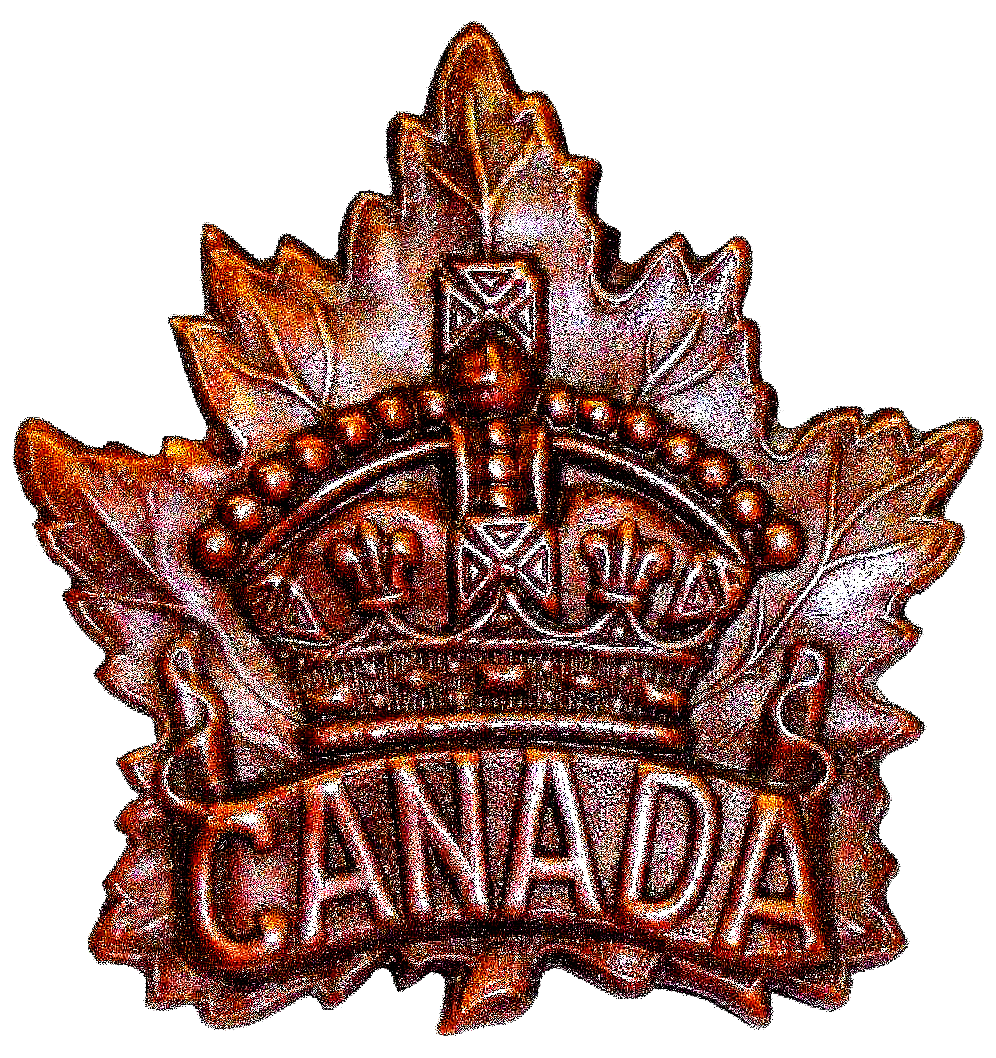
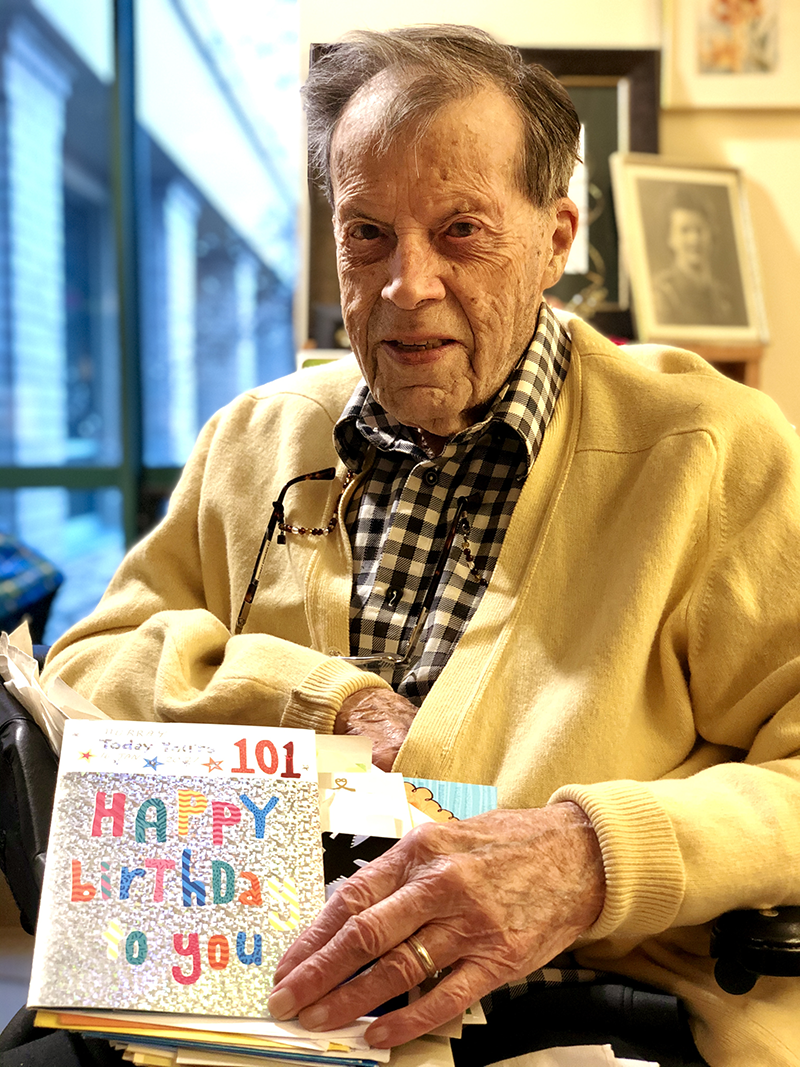
.png)
.png)
.png)
.png)
.png)
.png)
